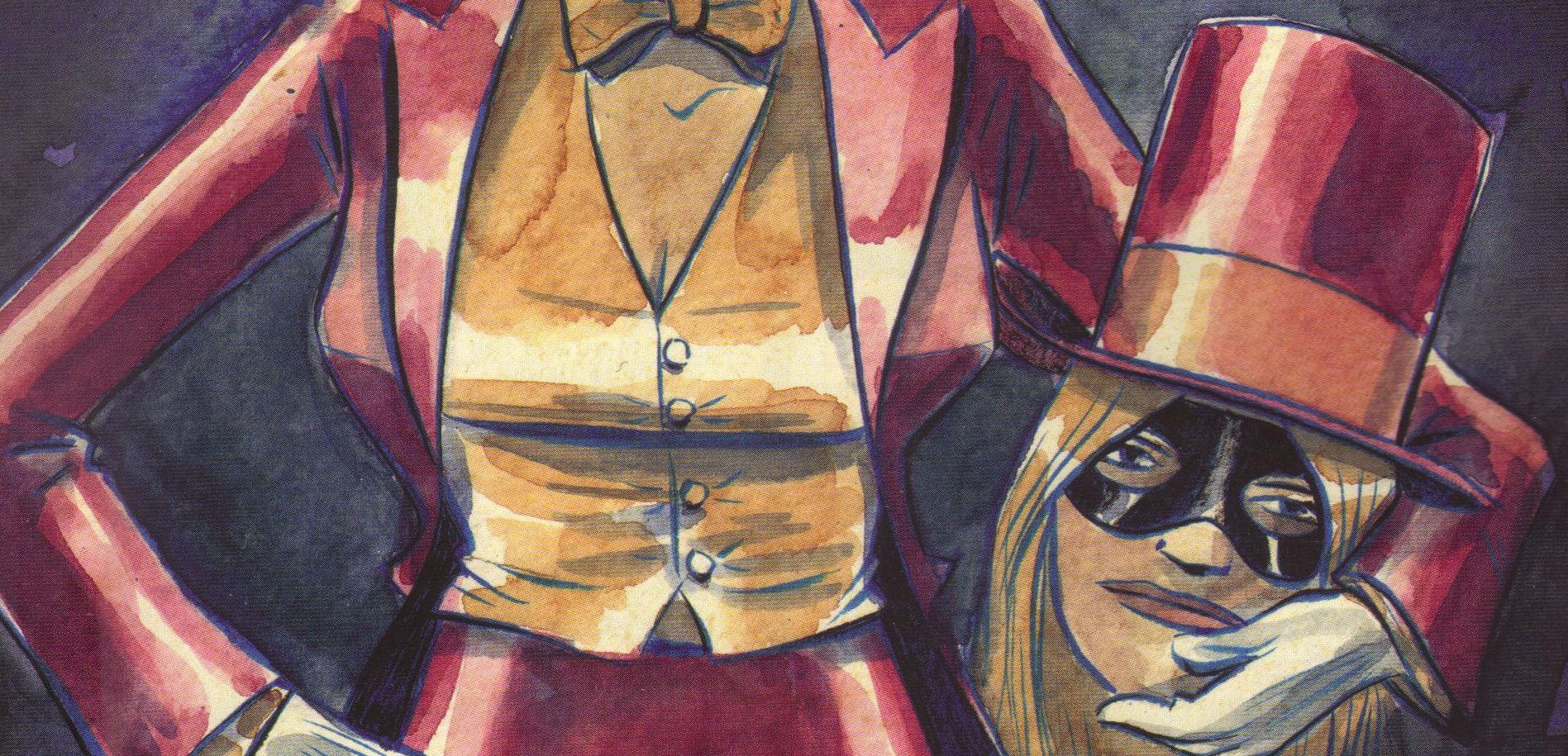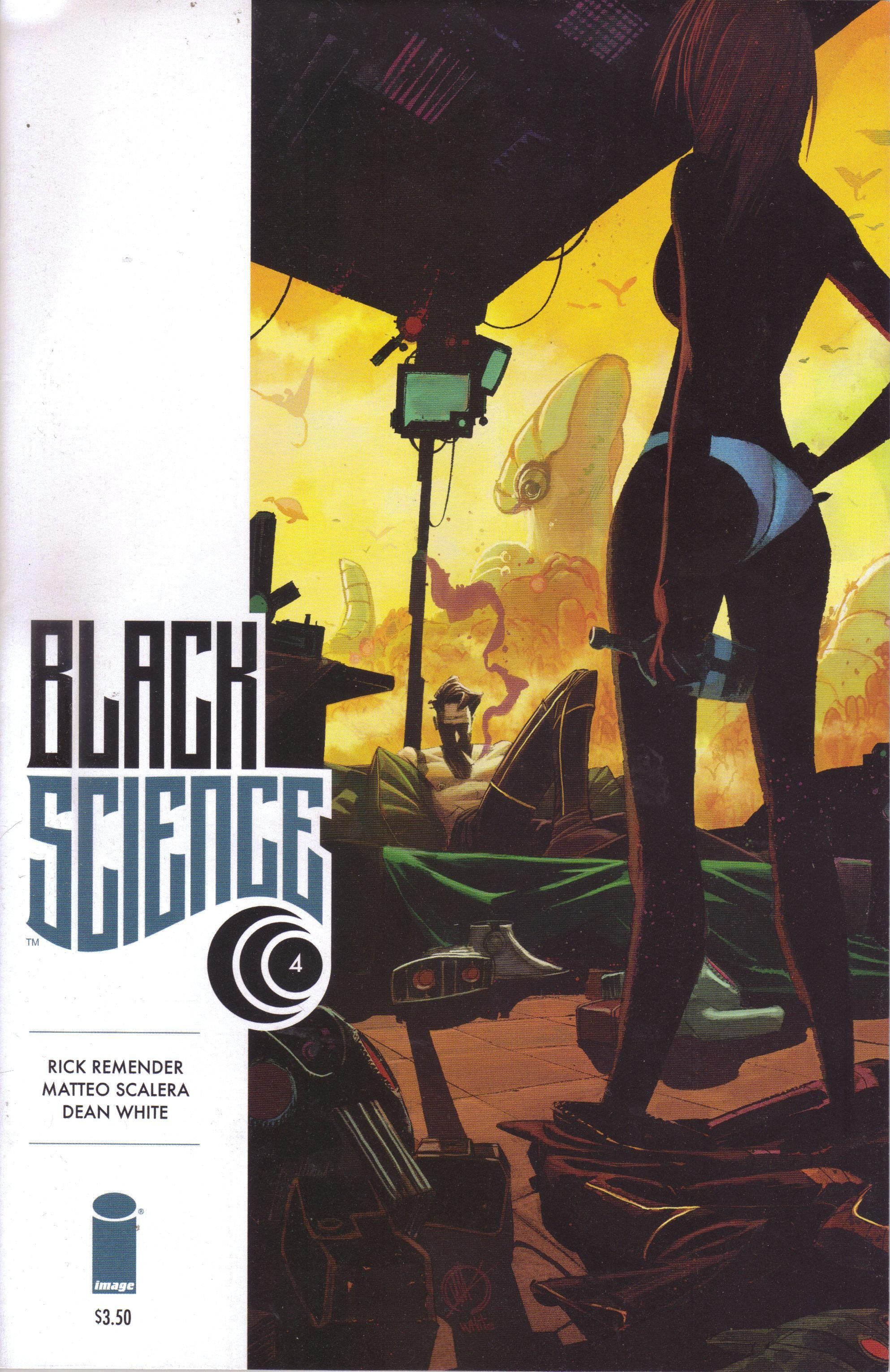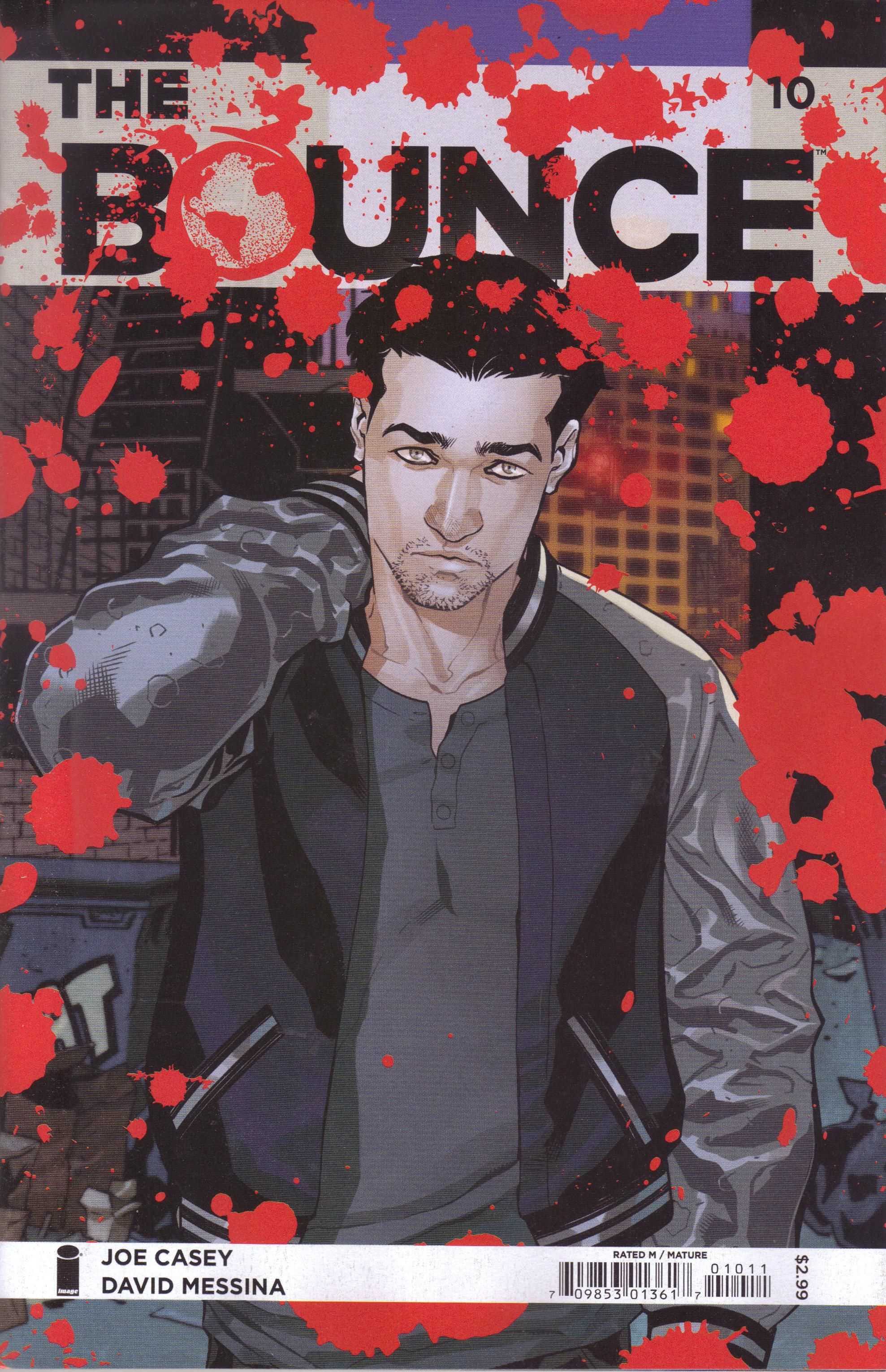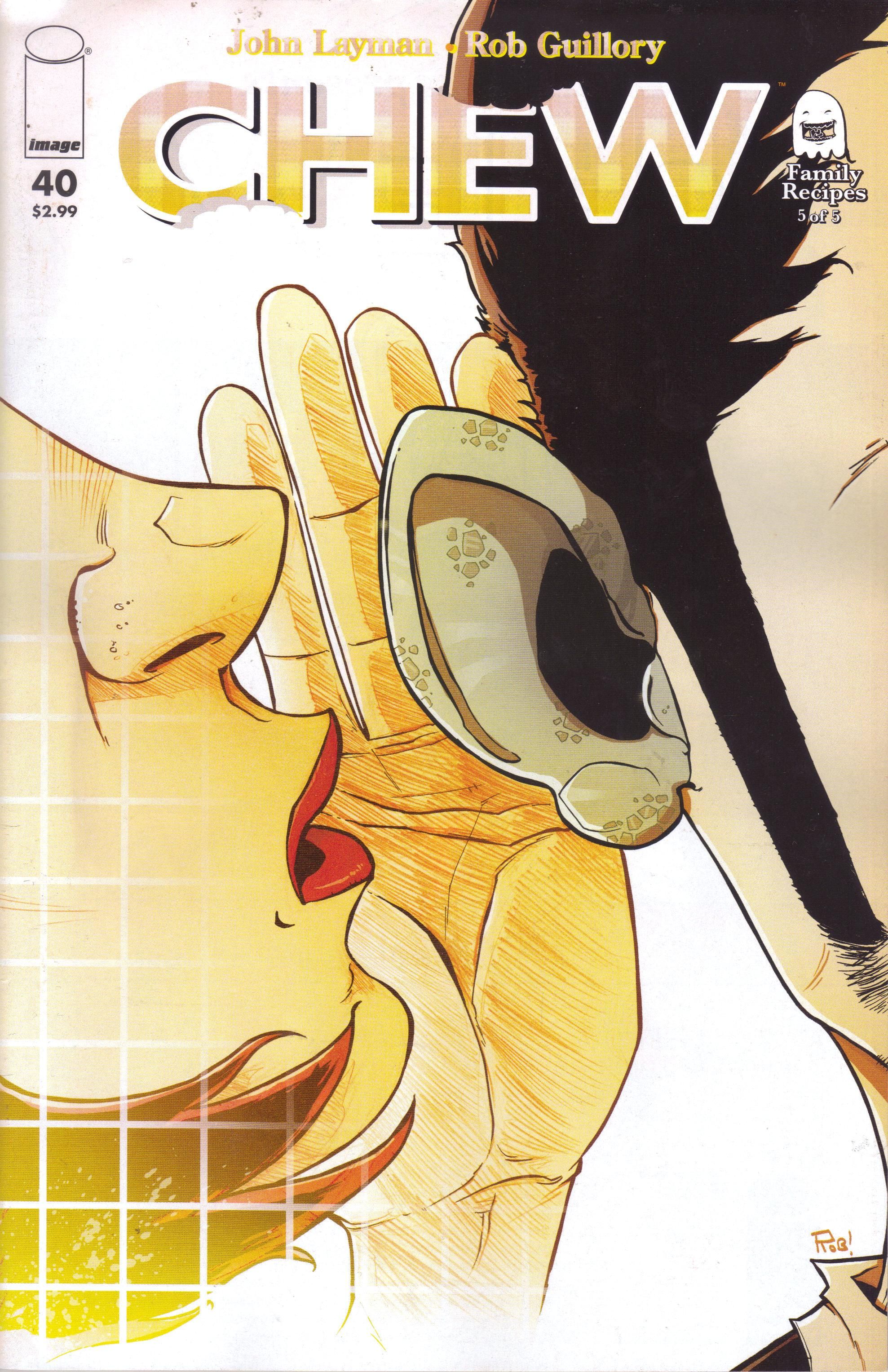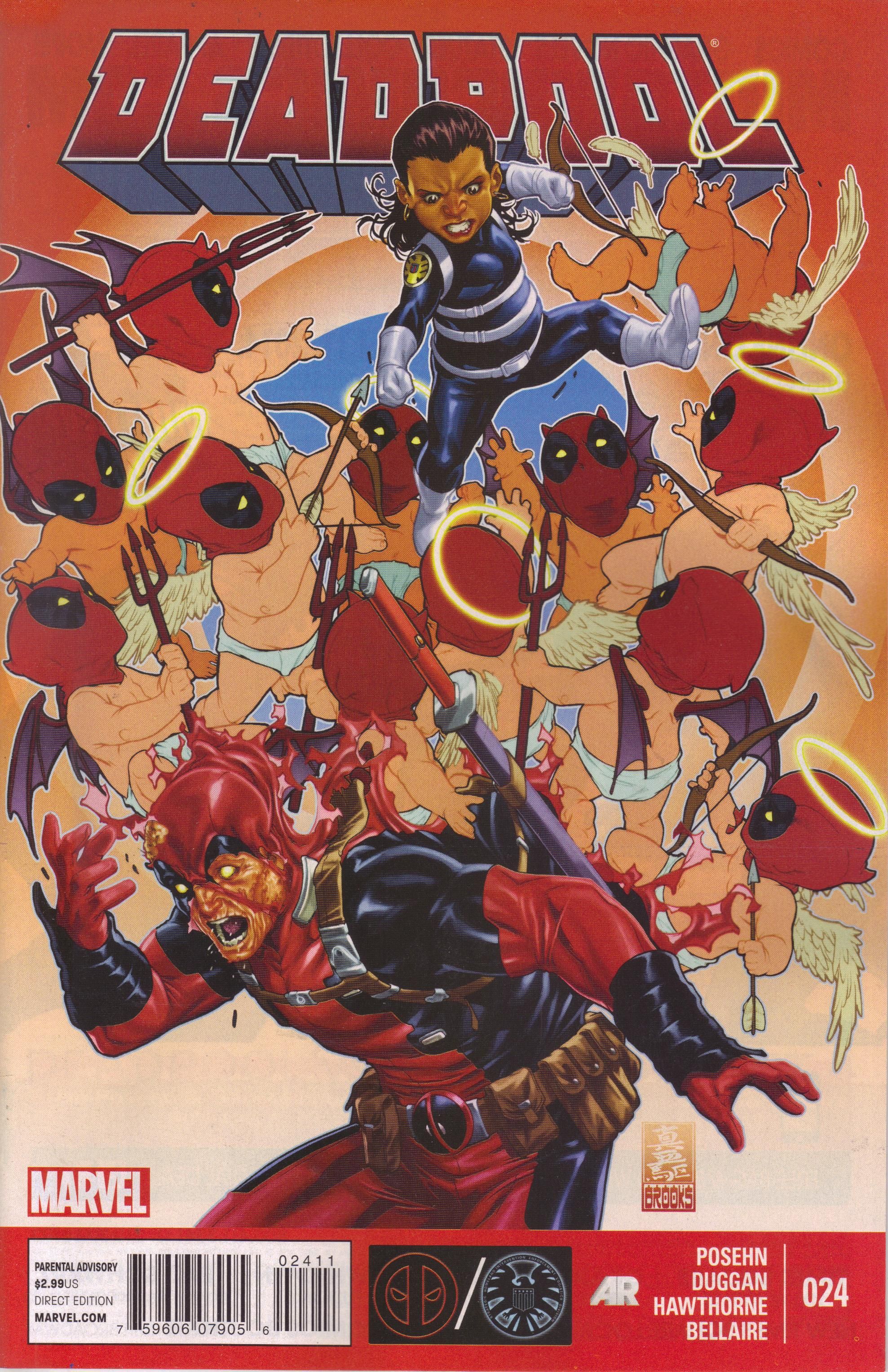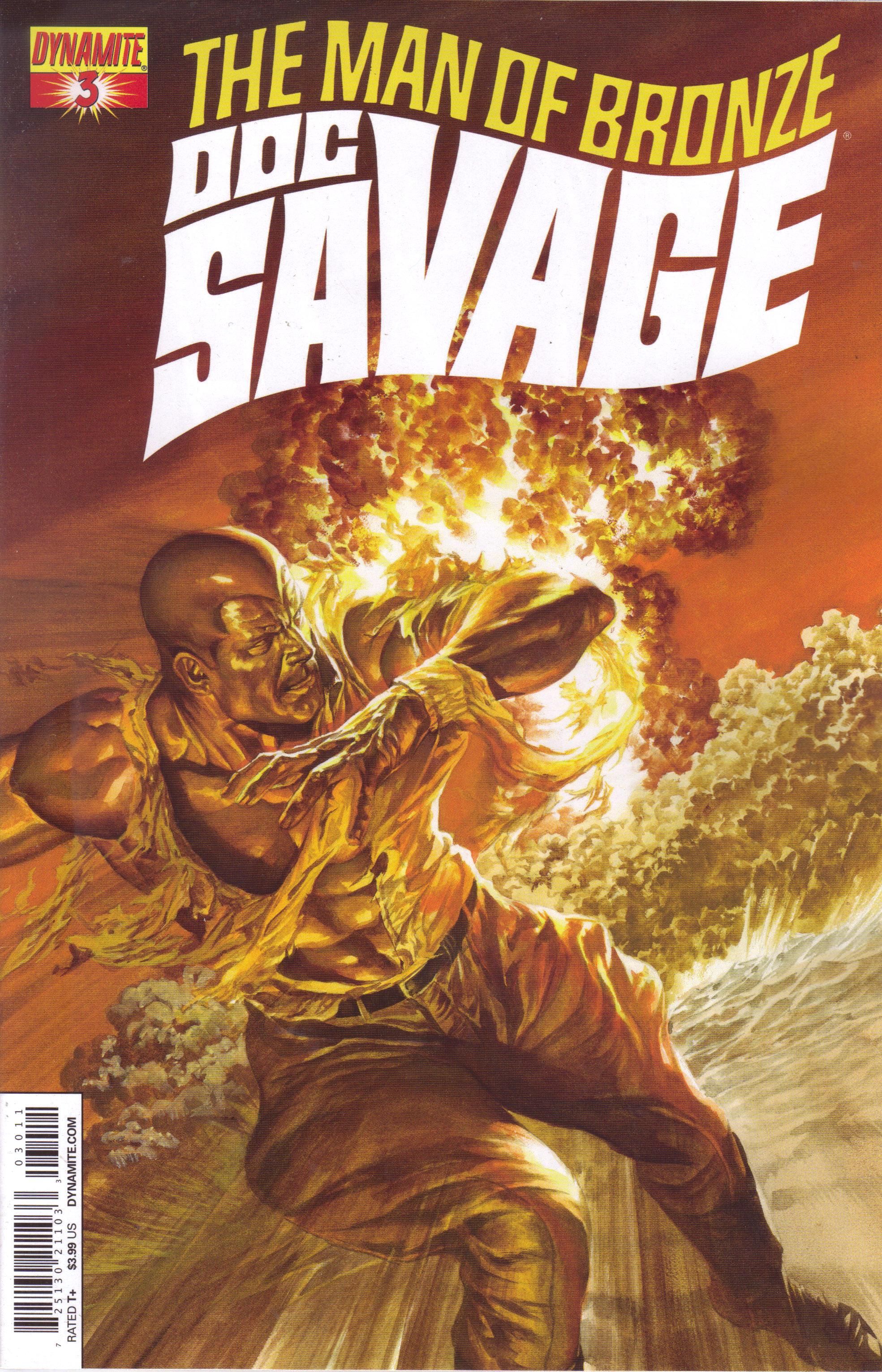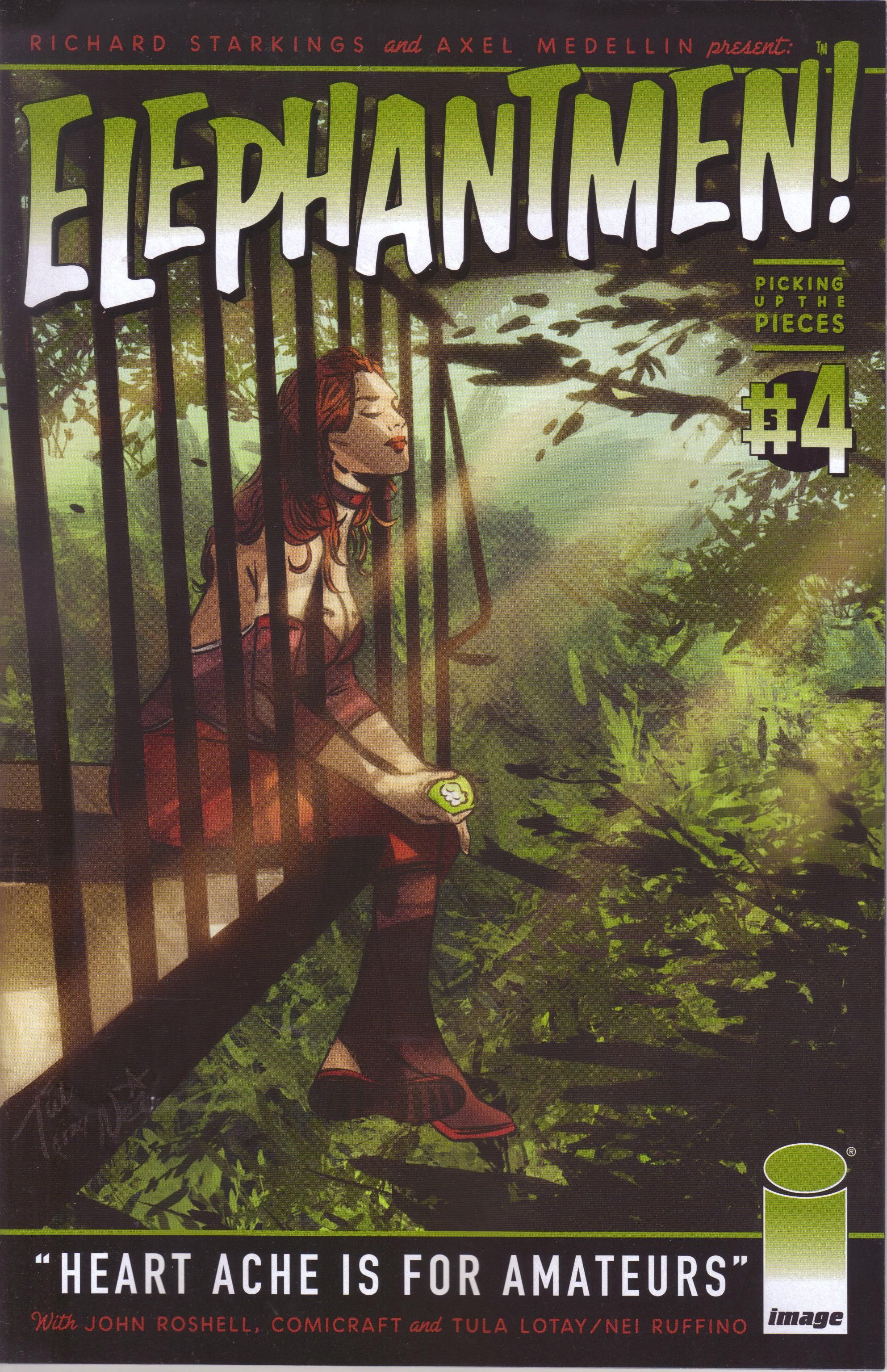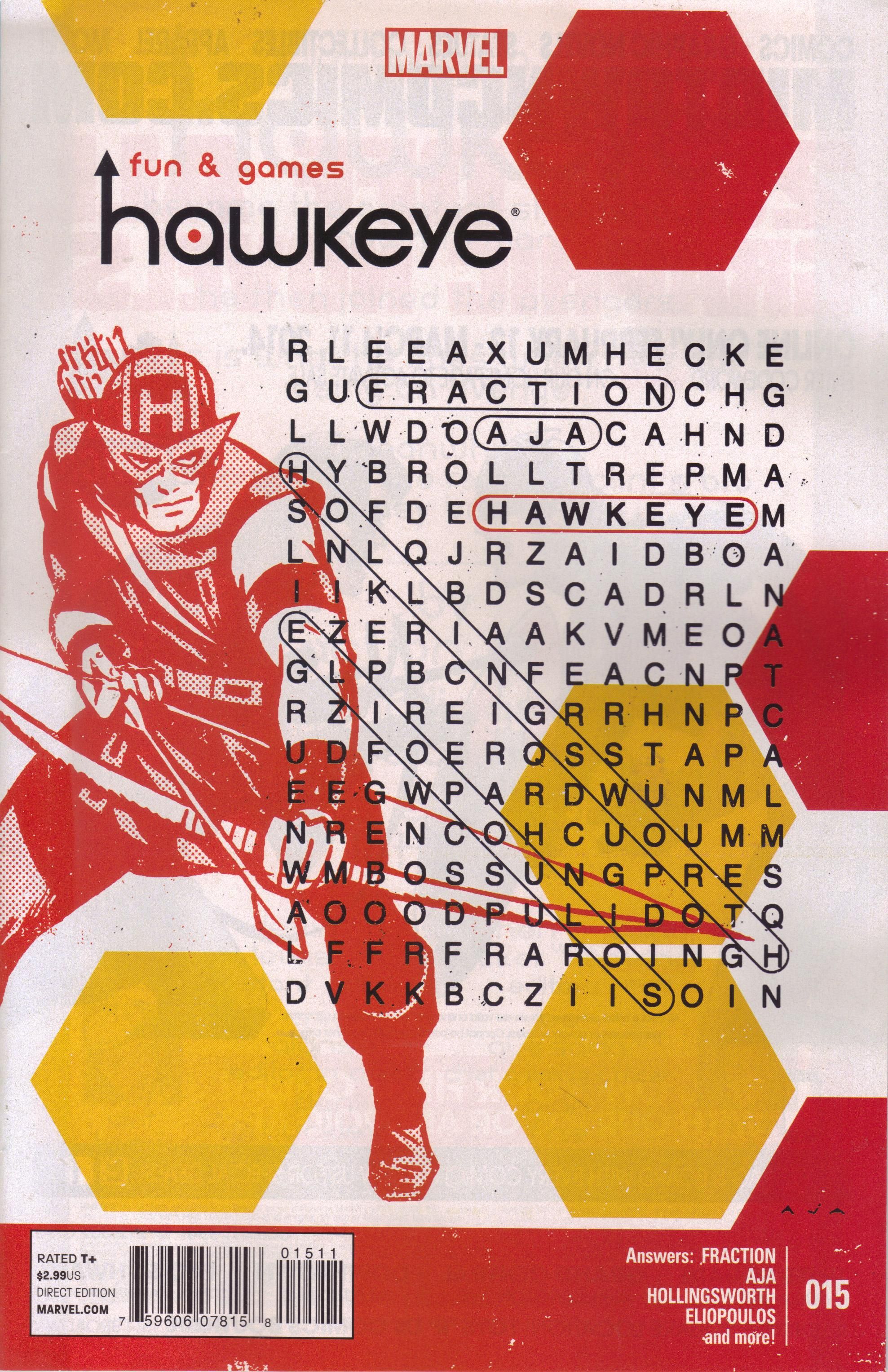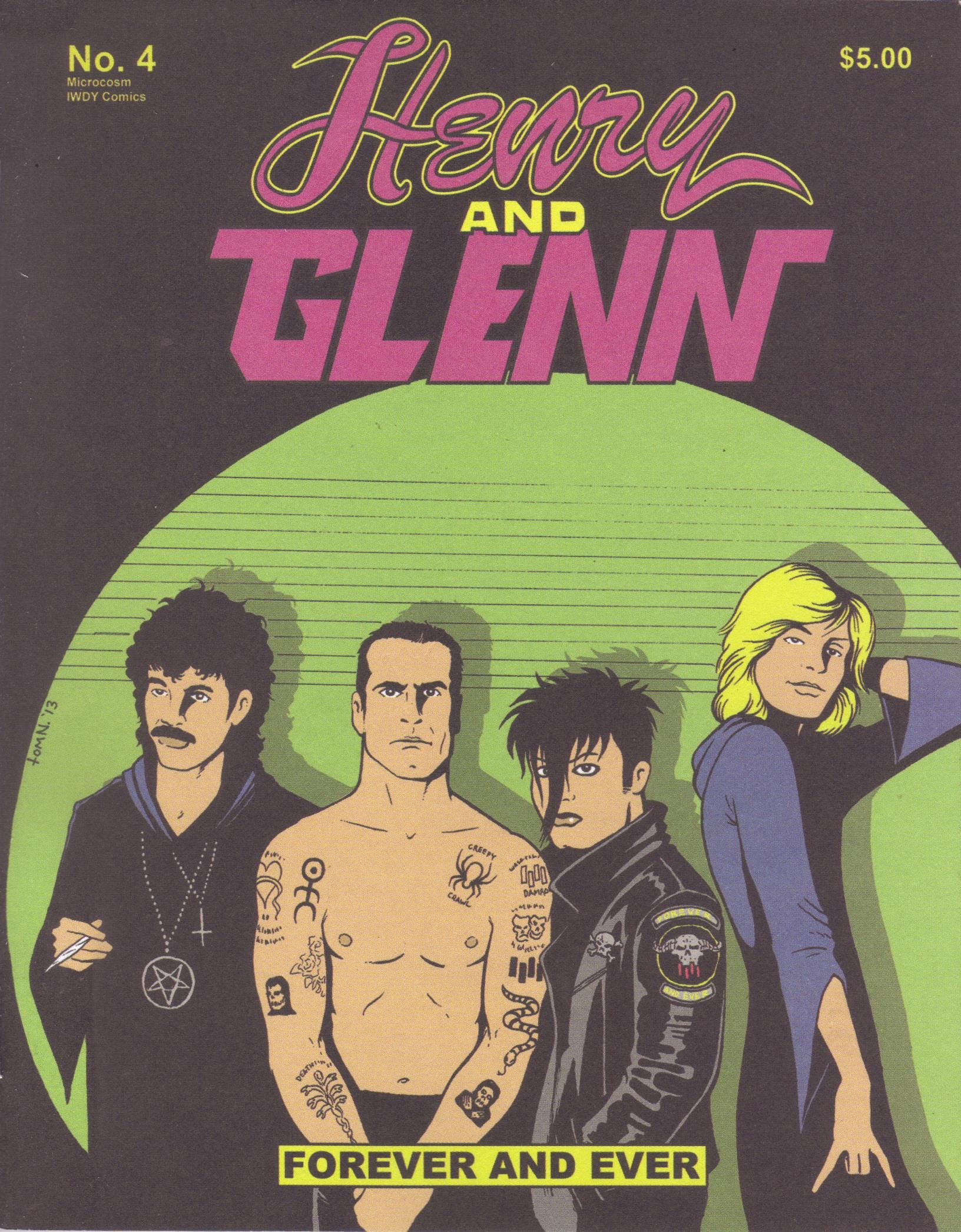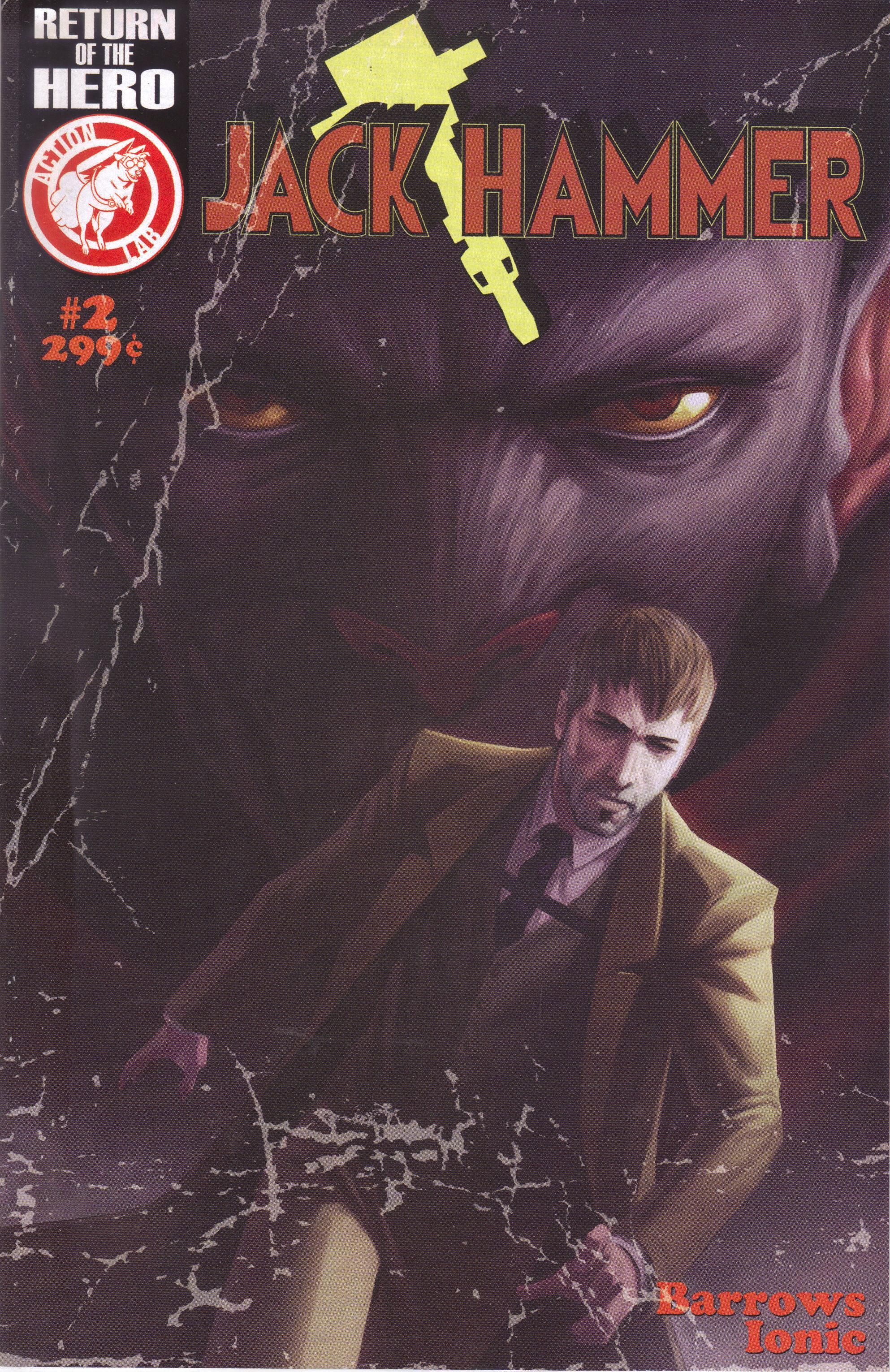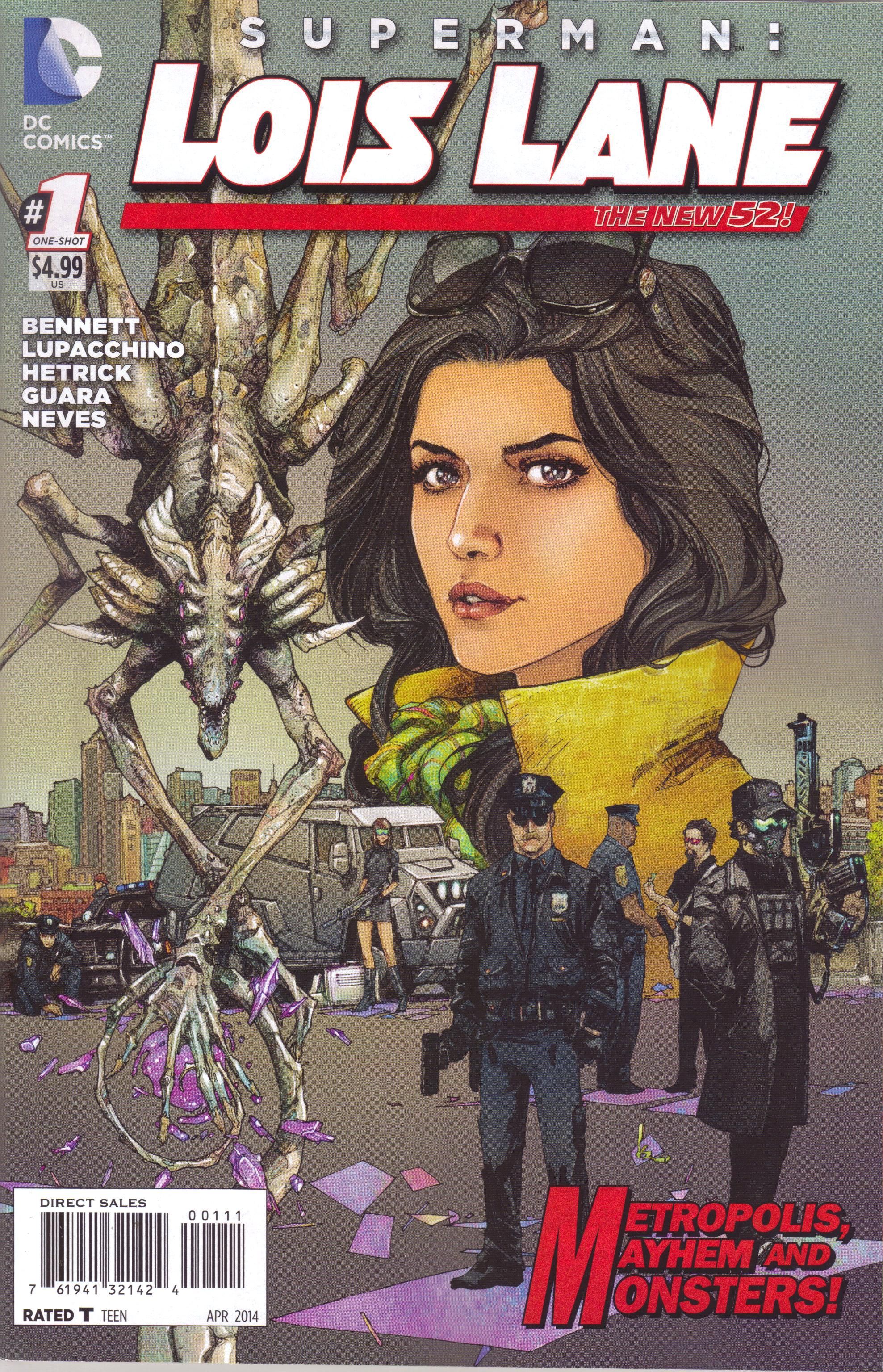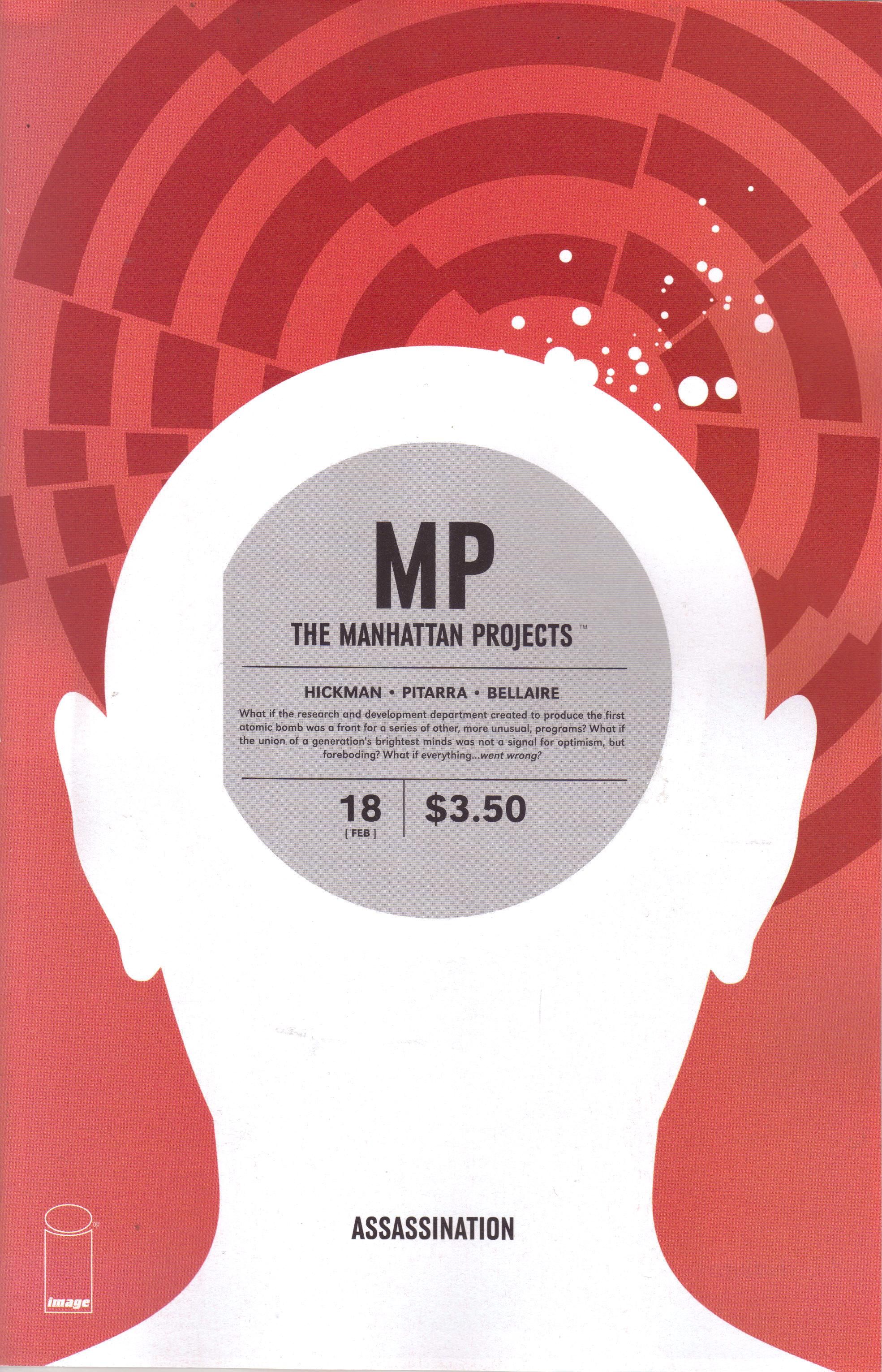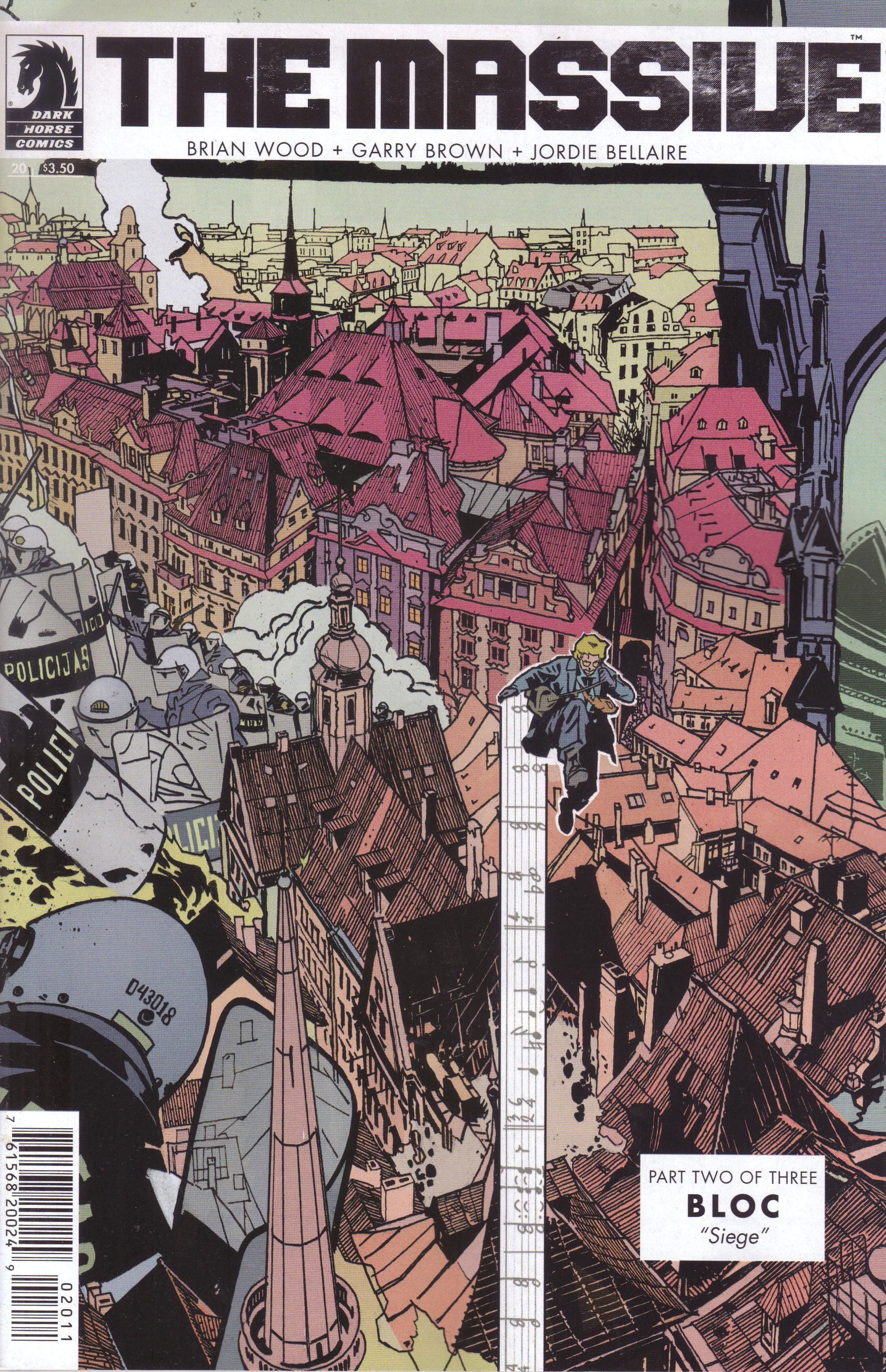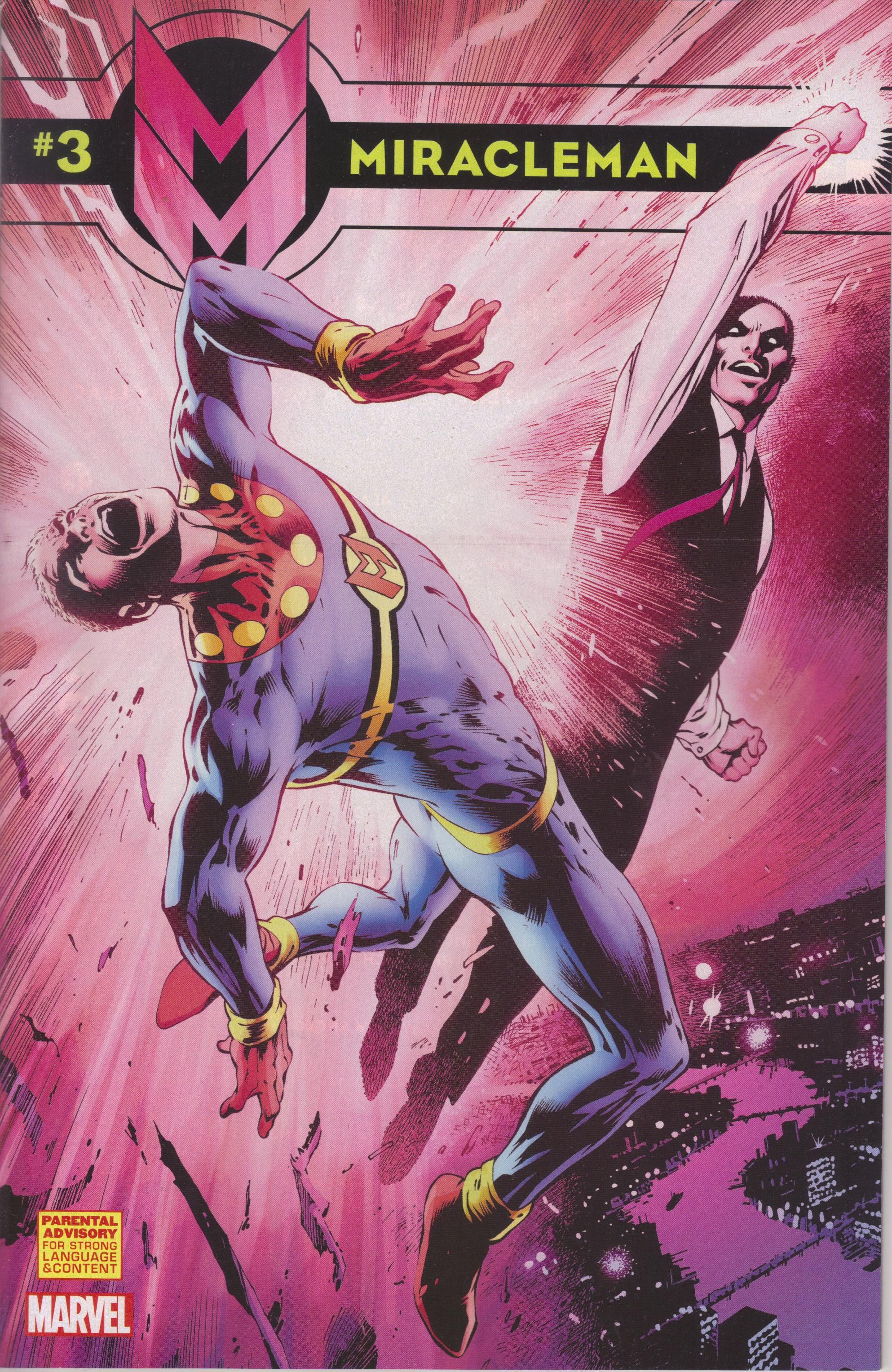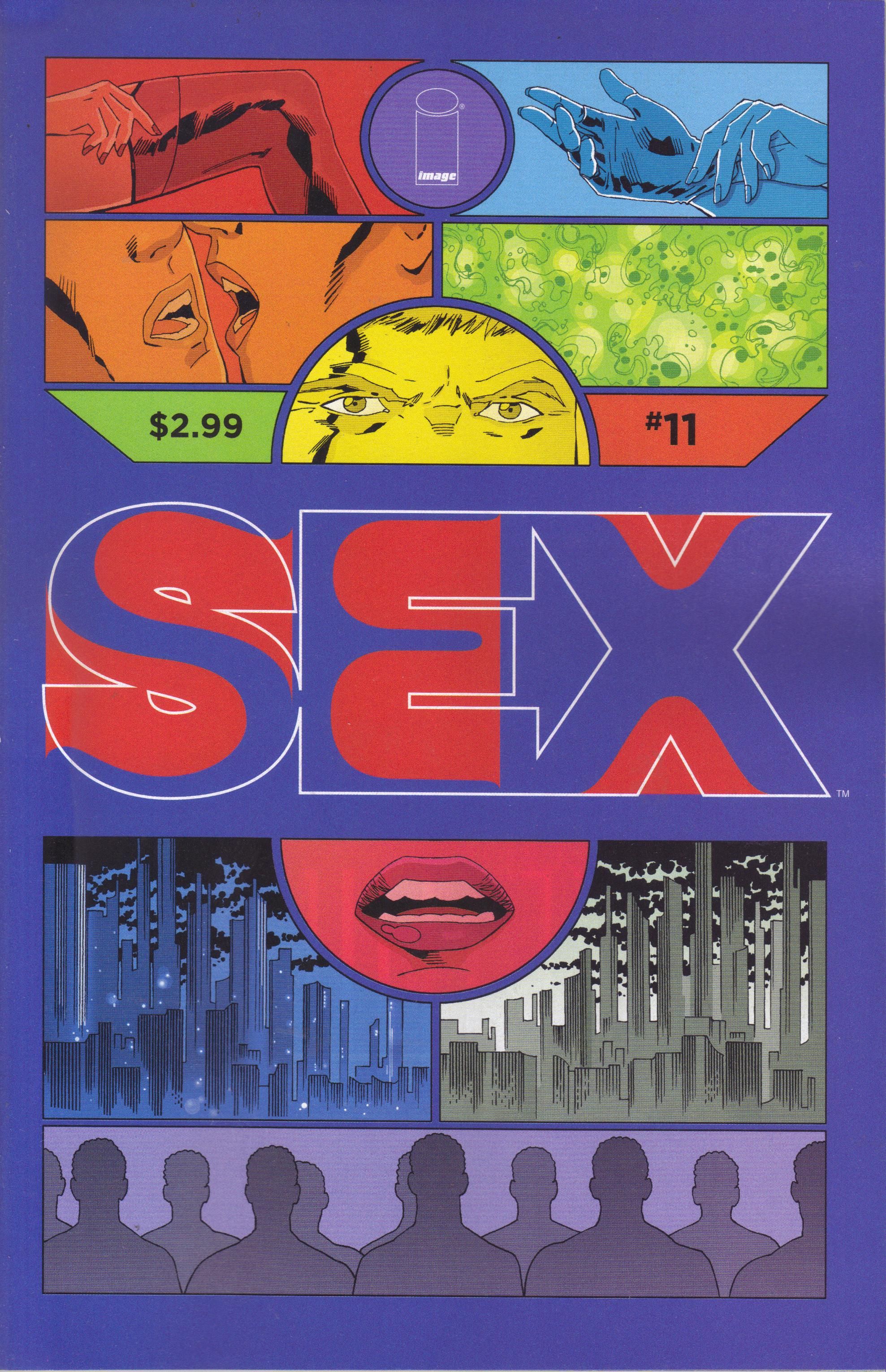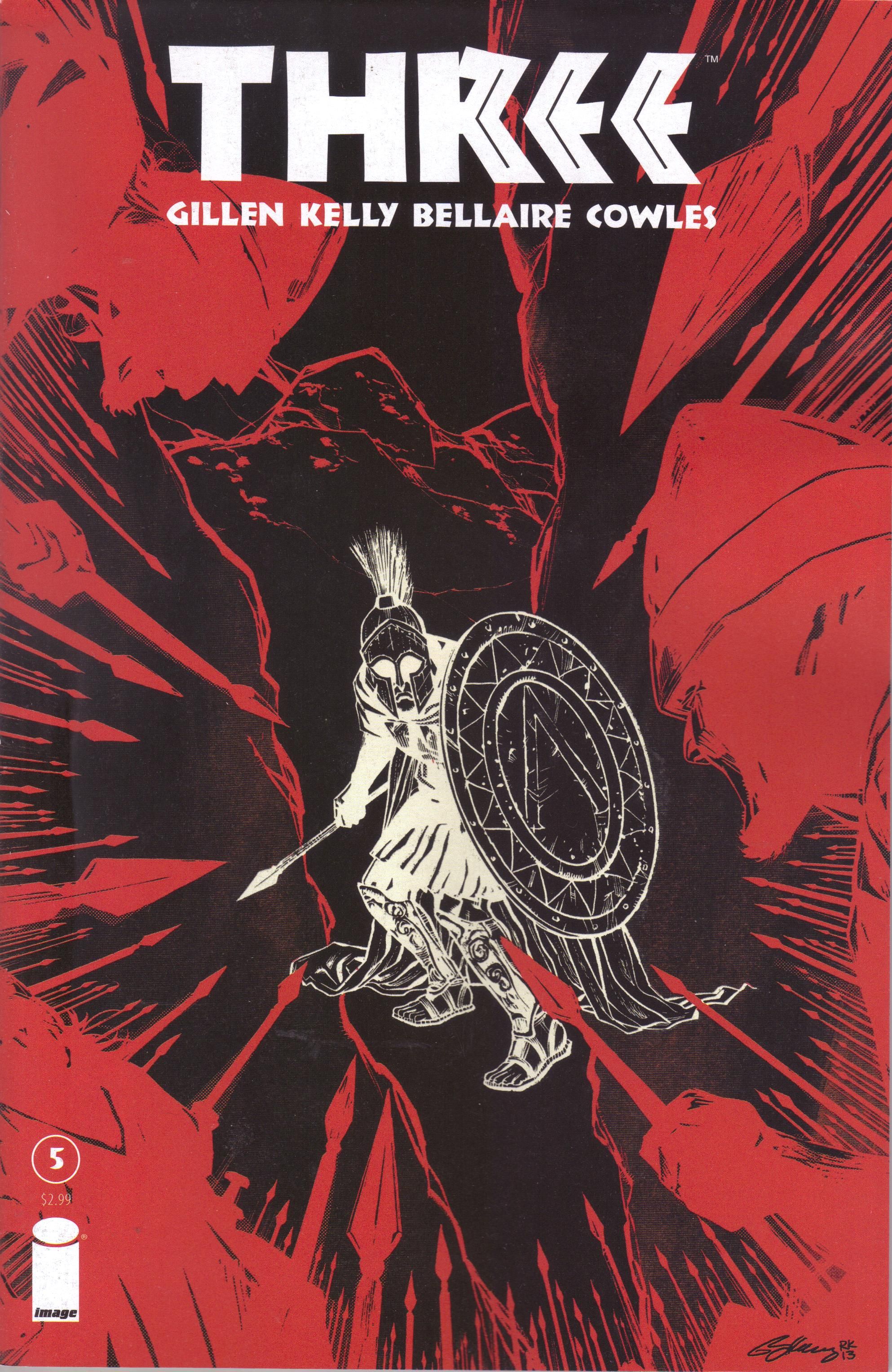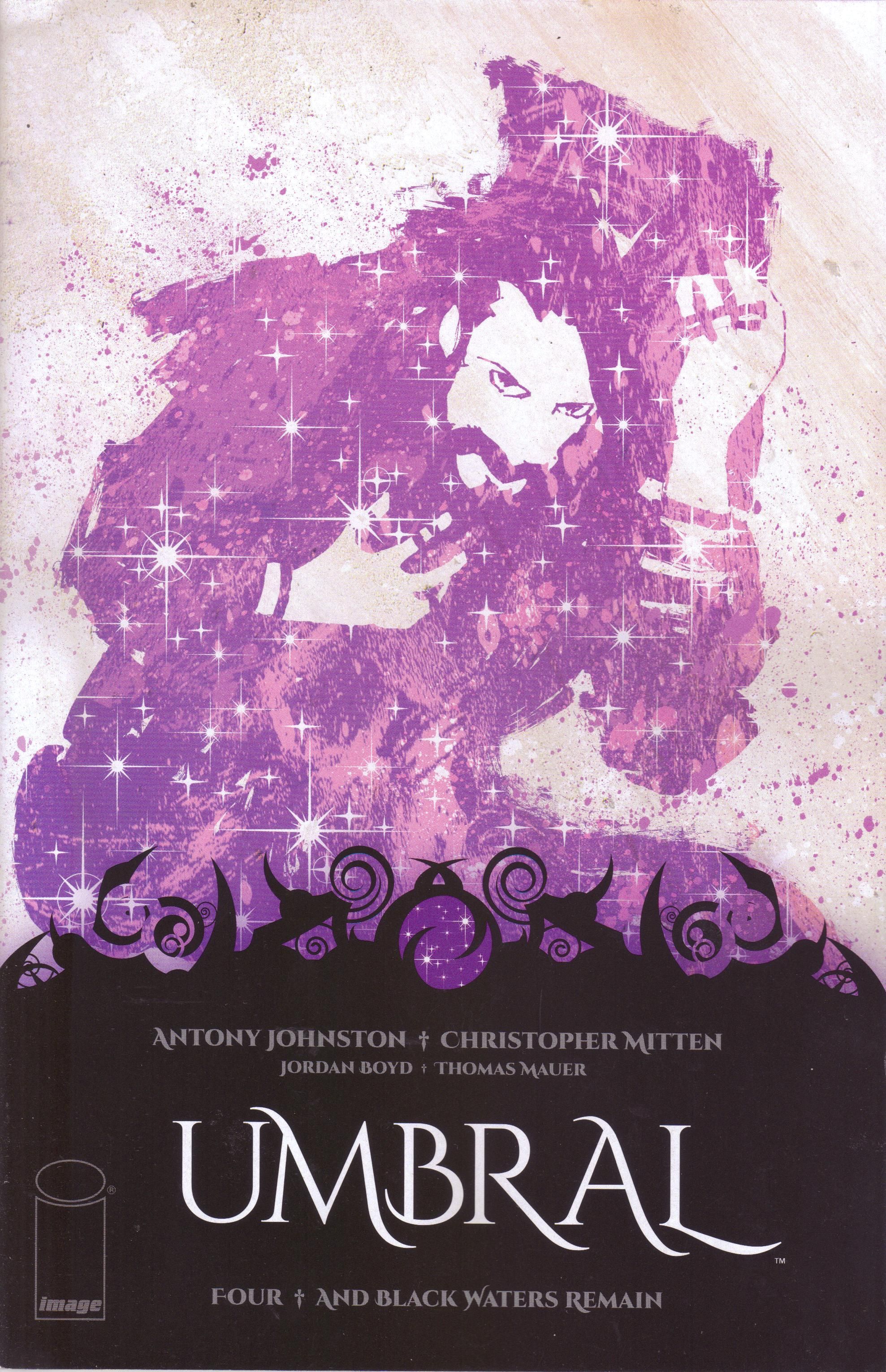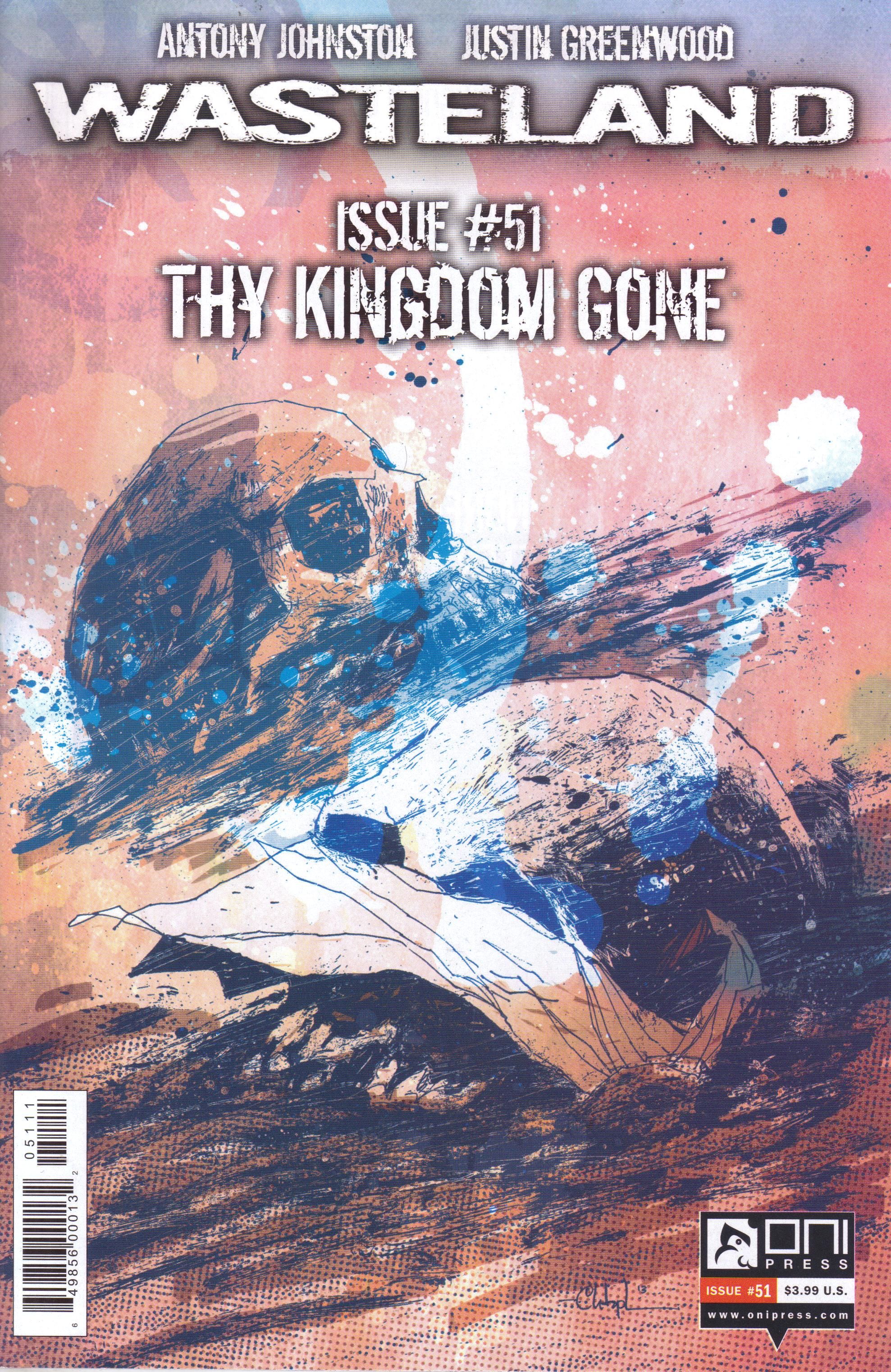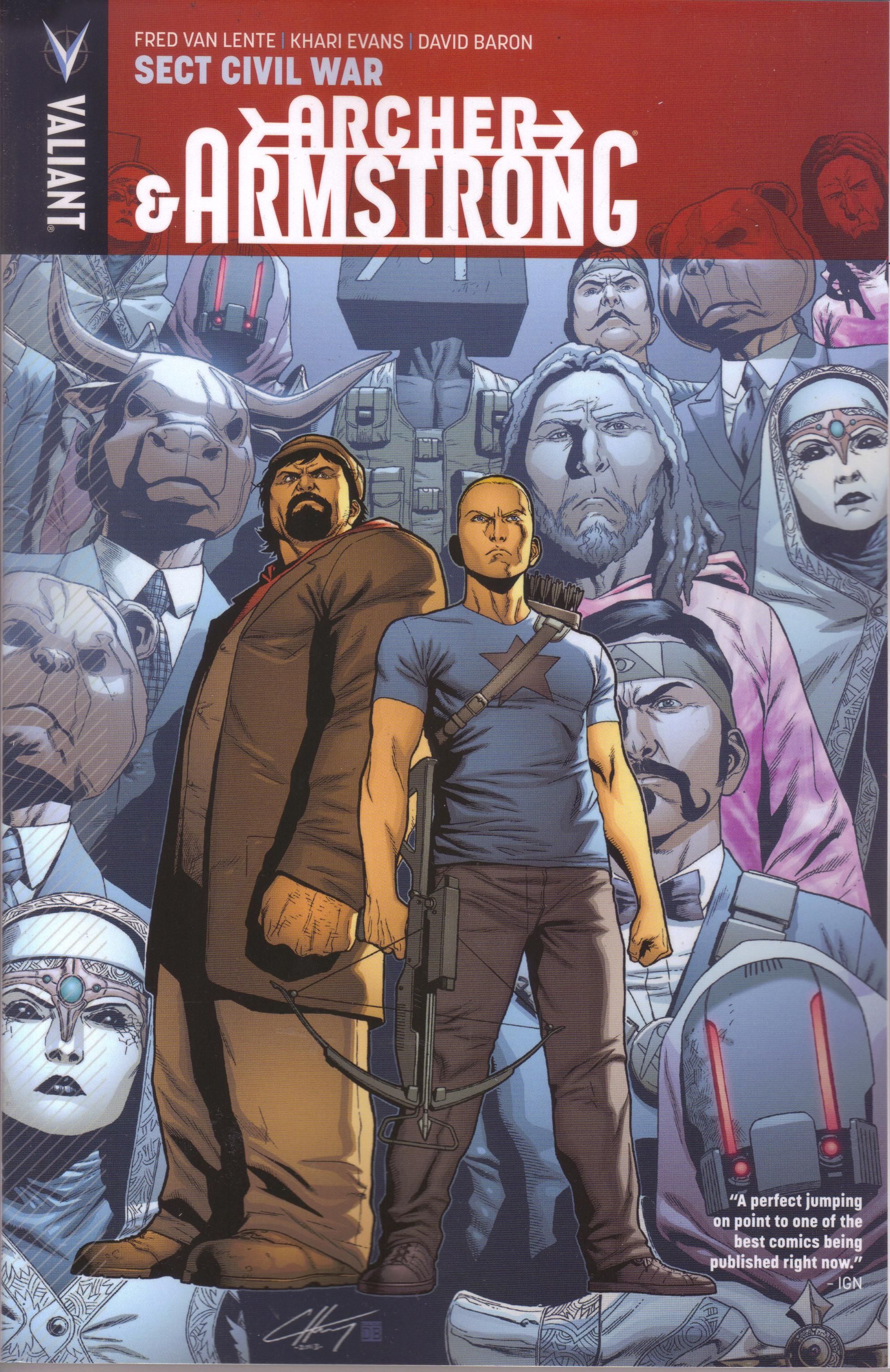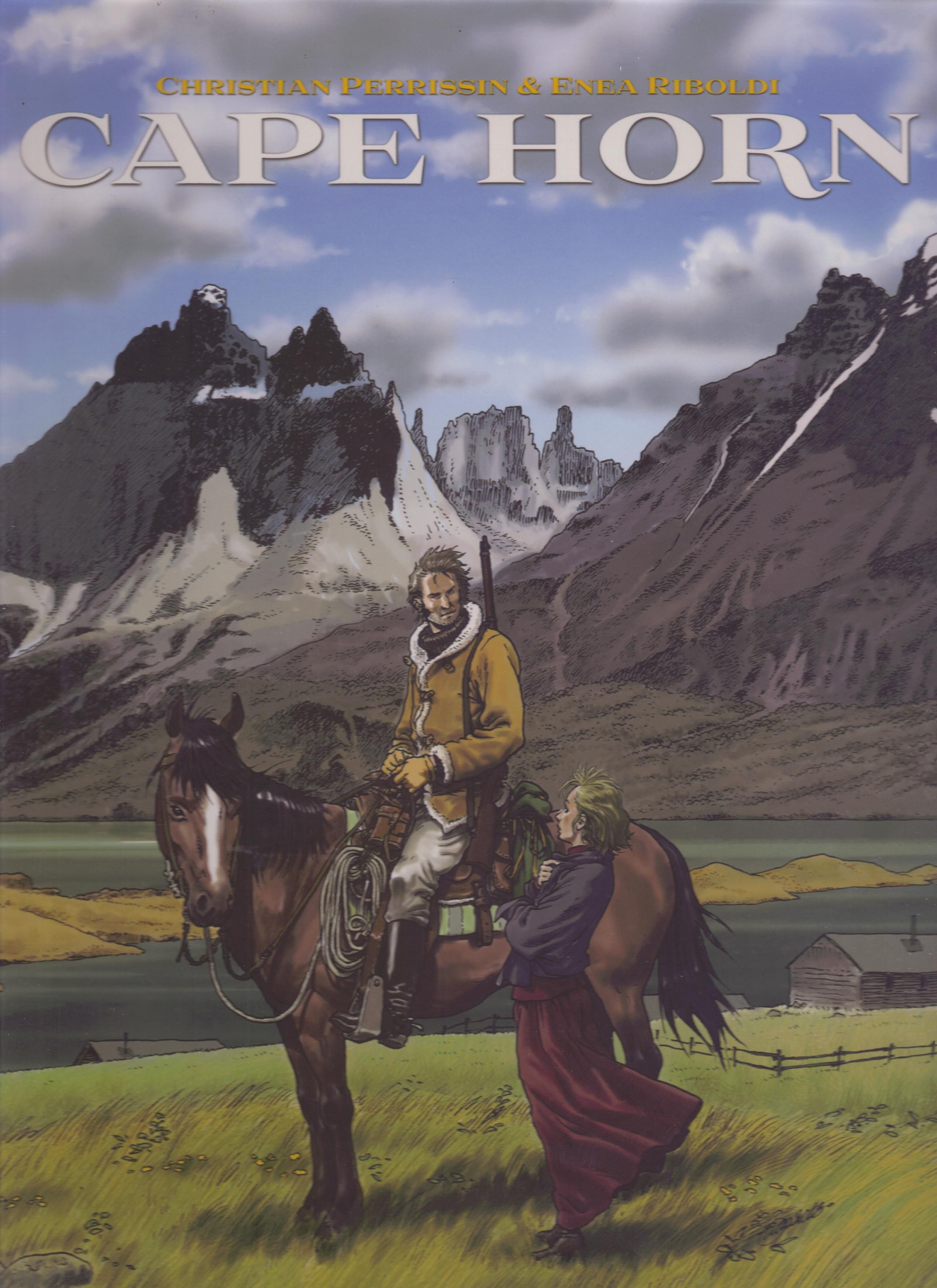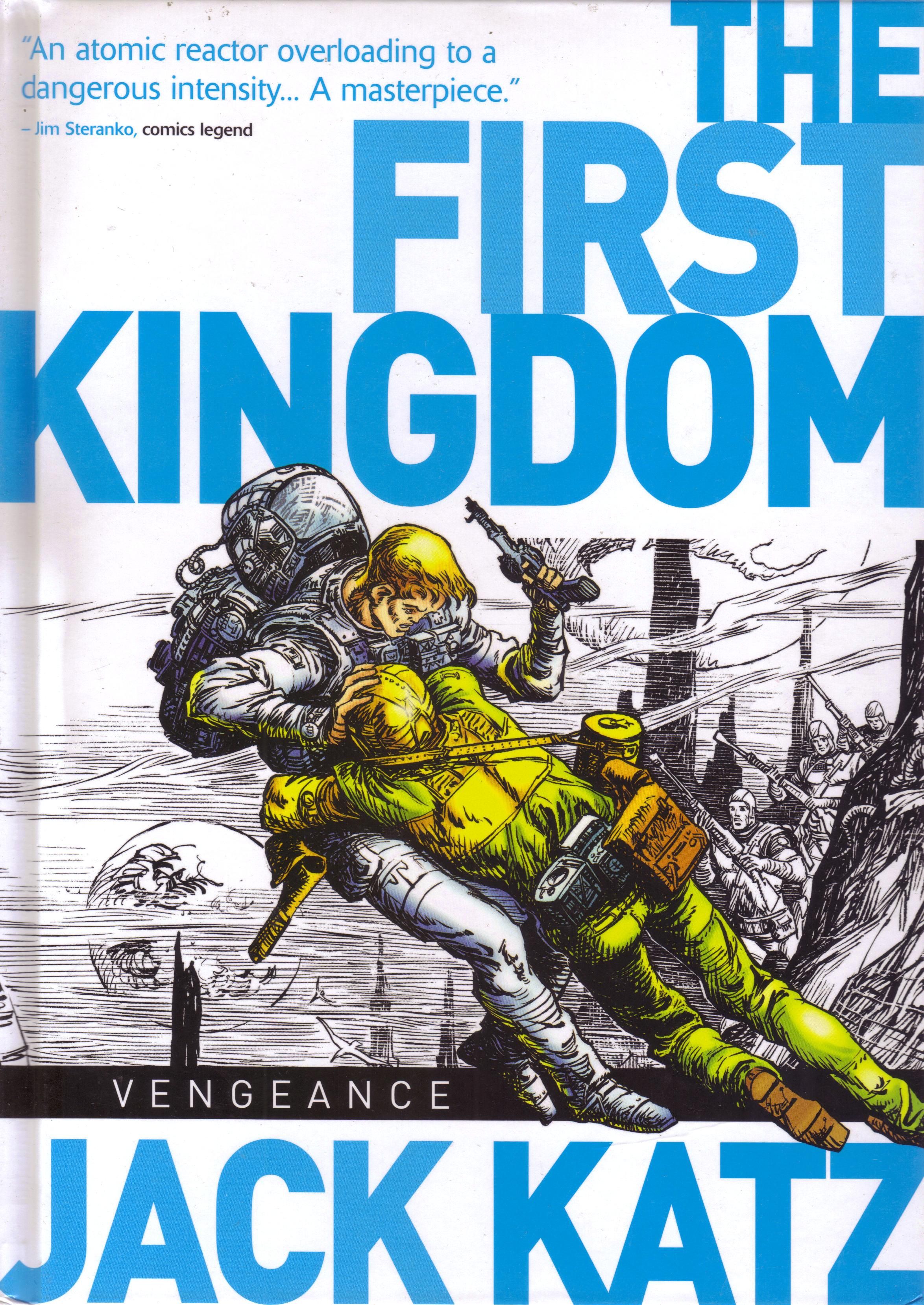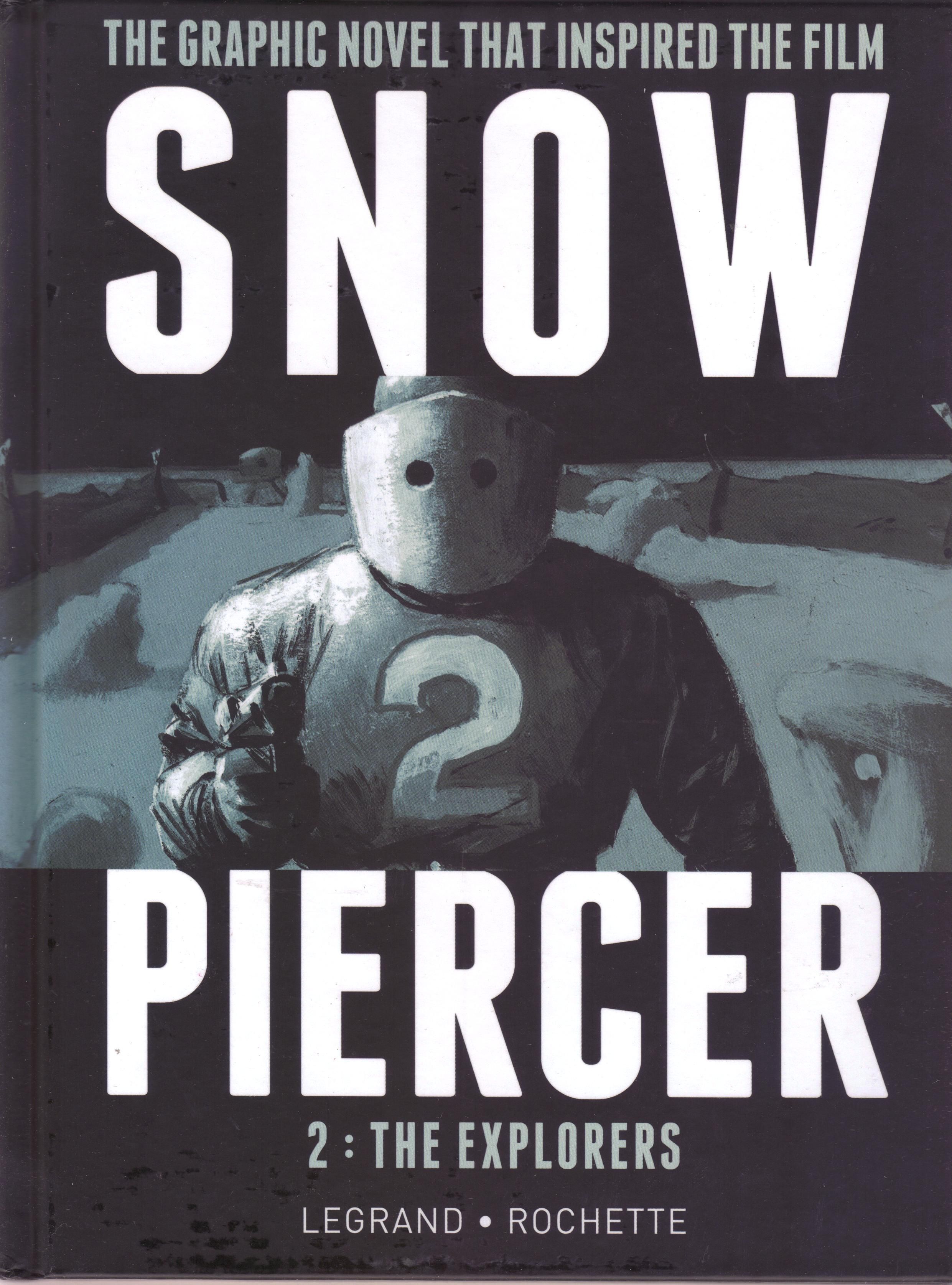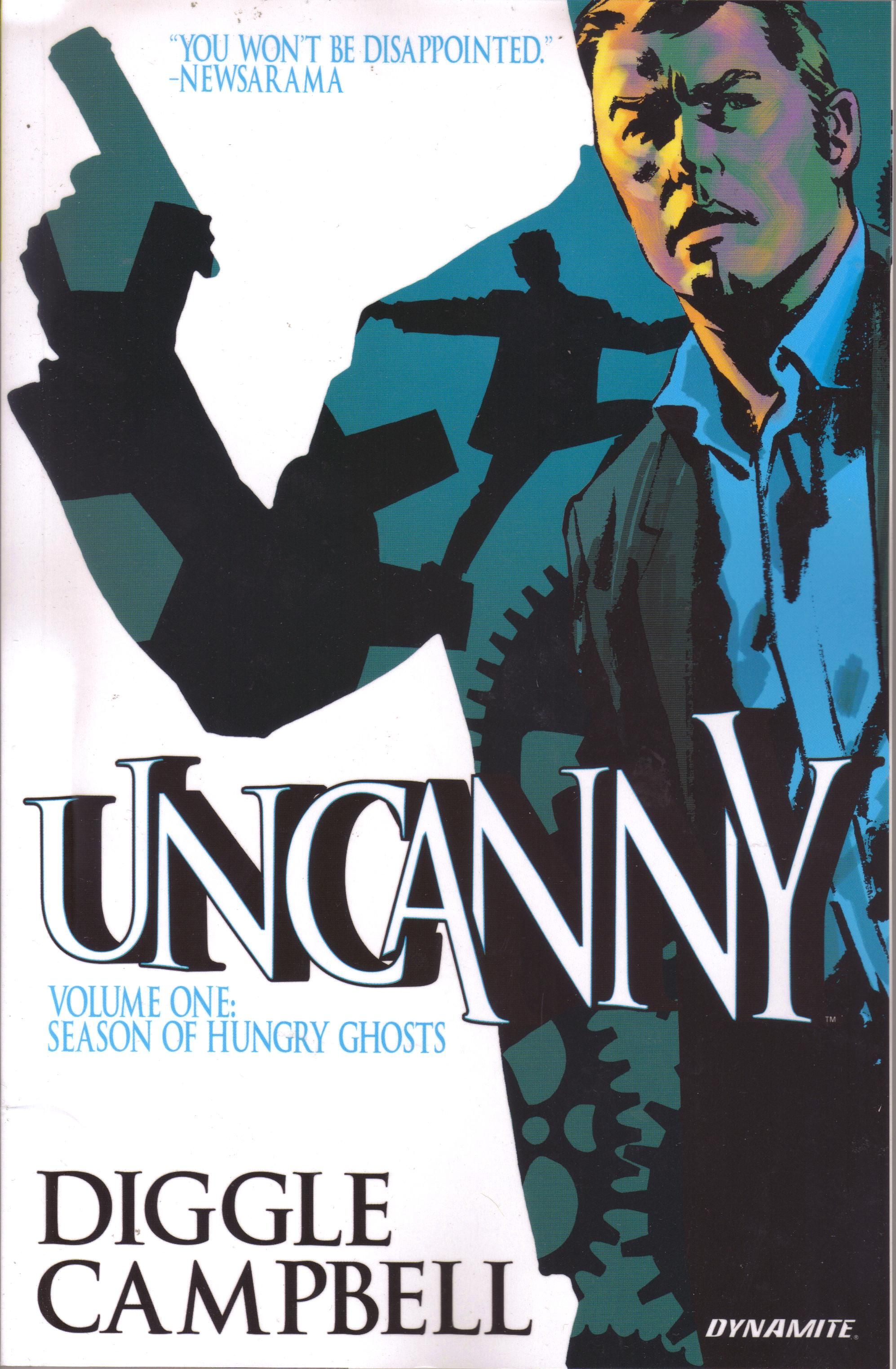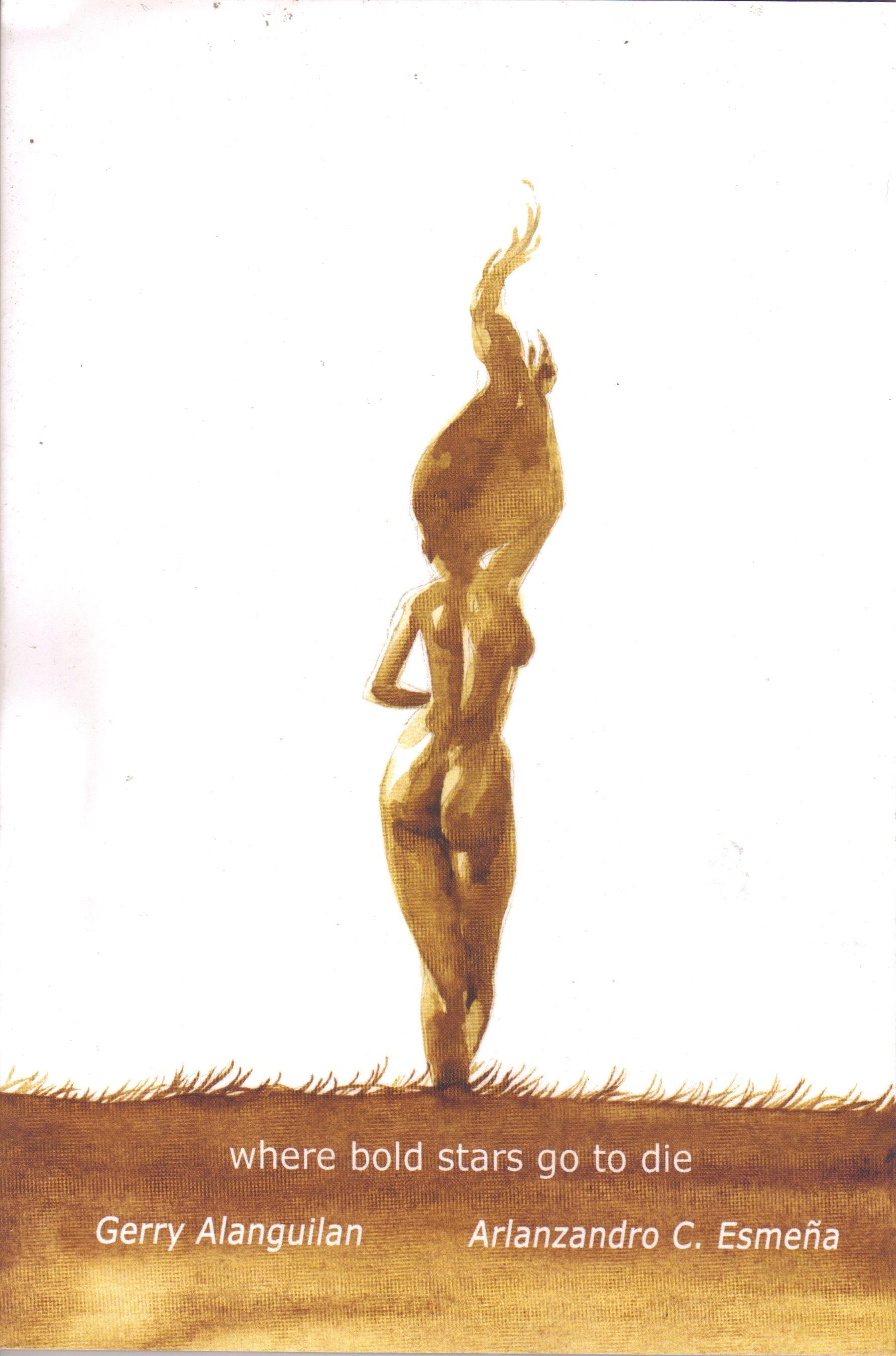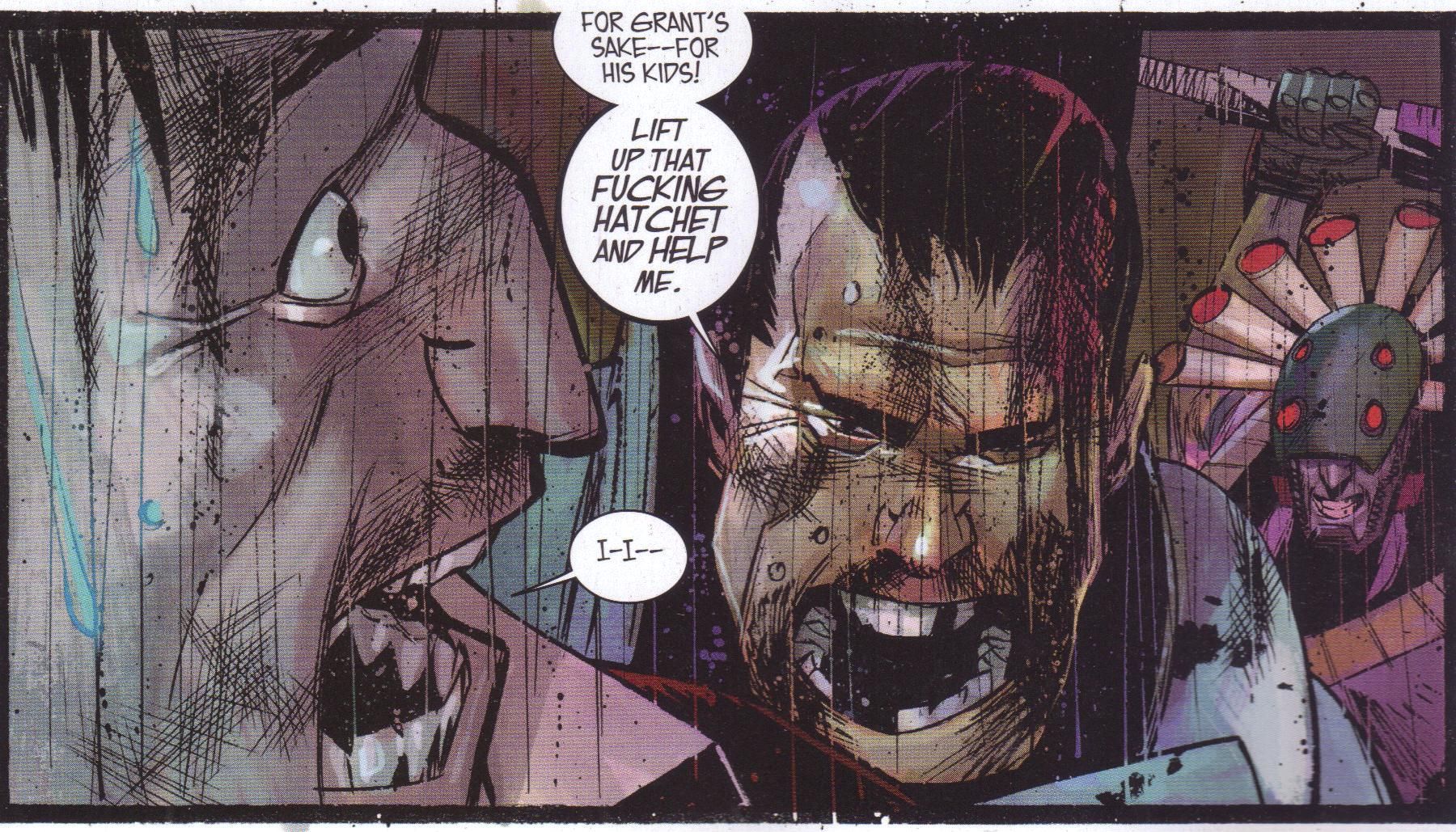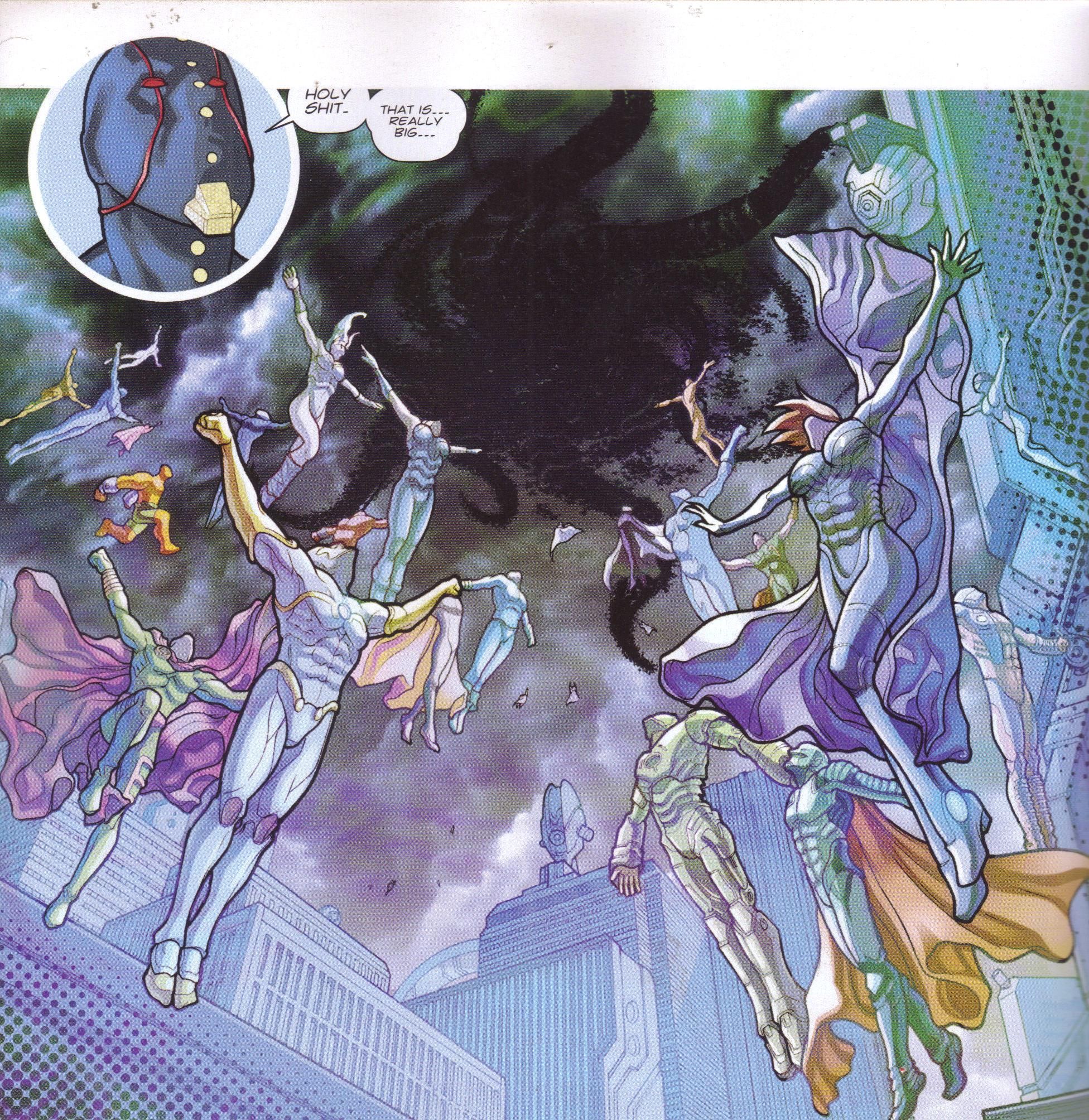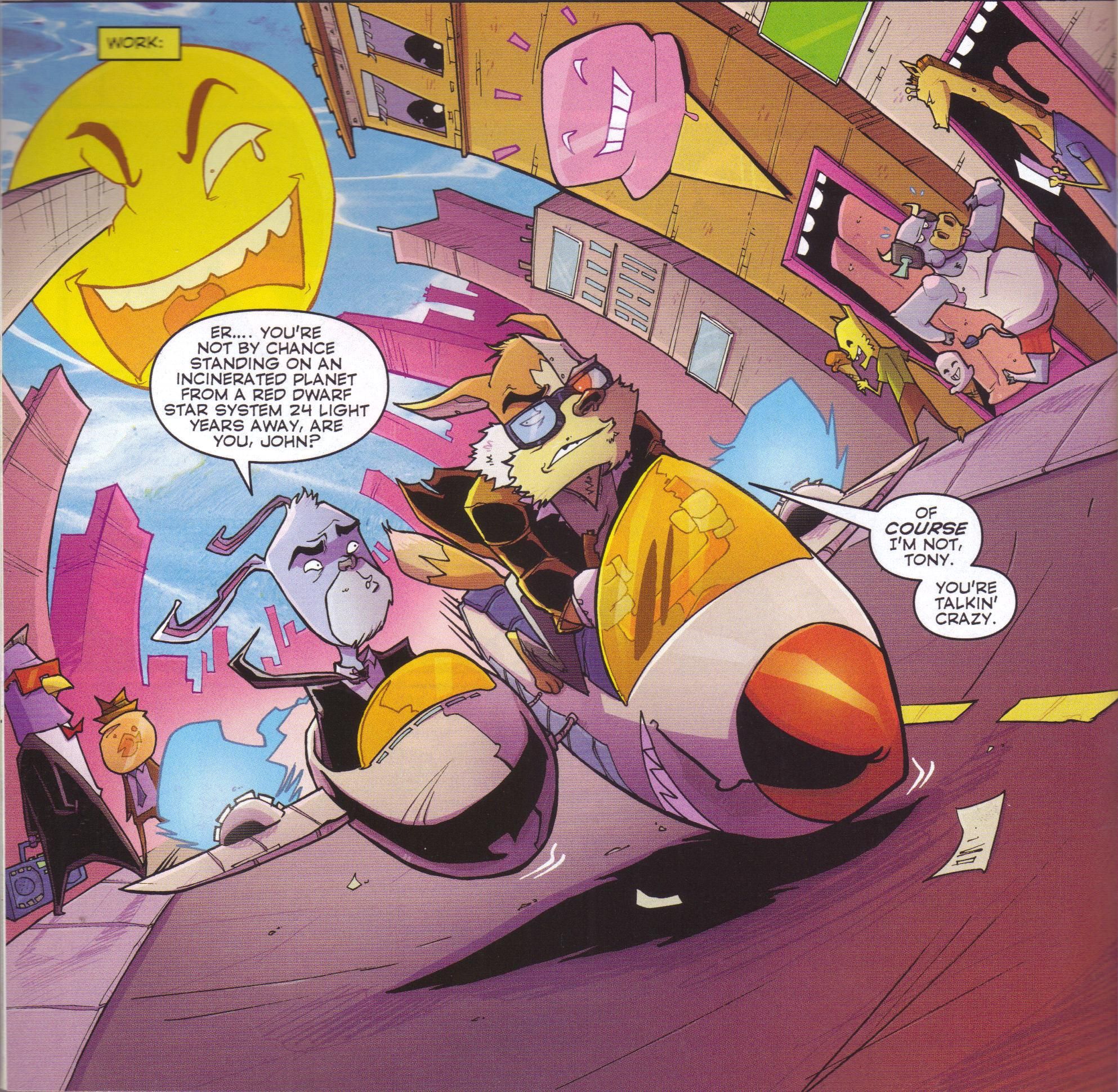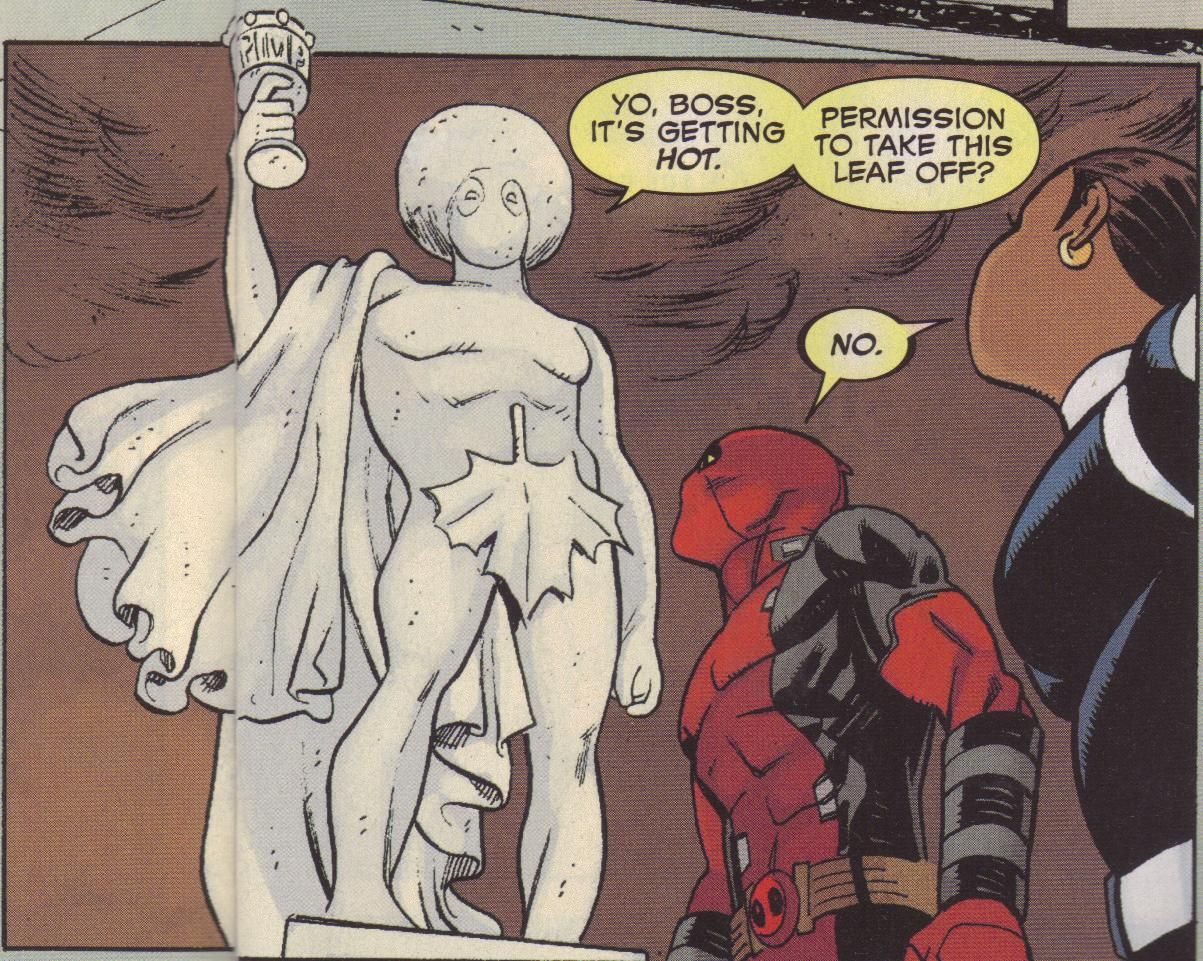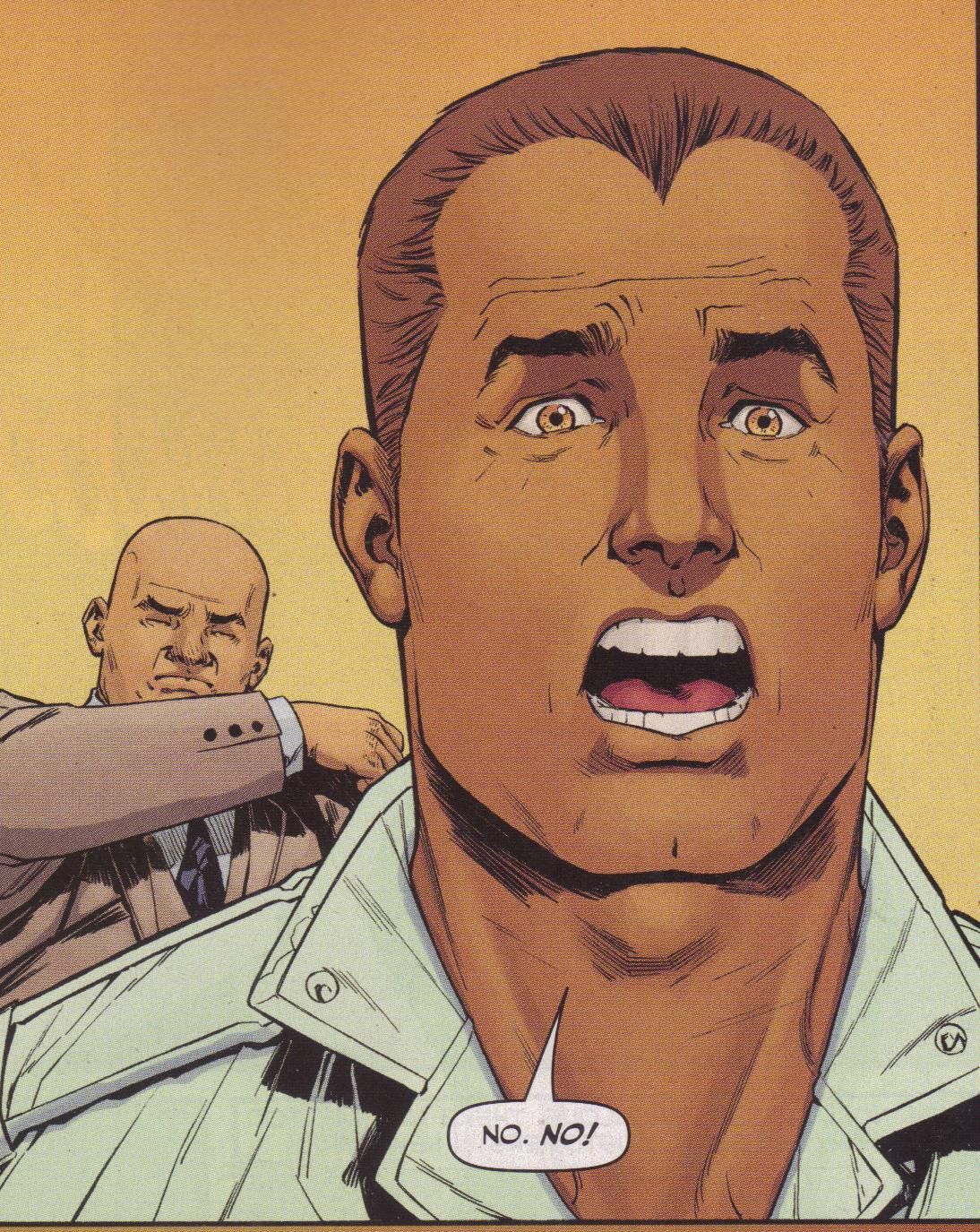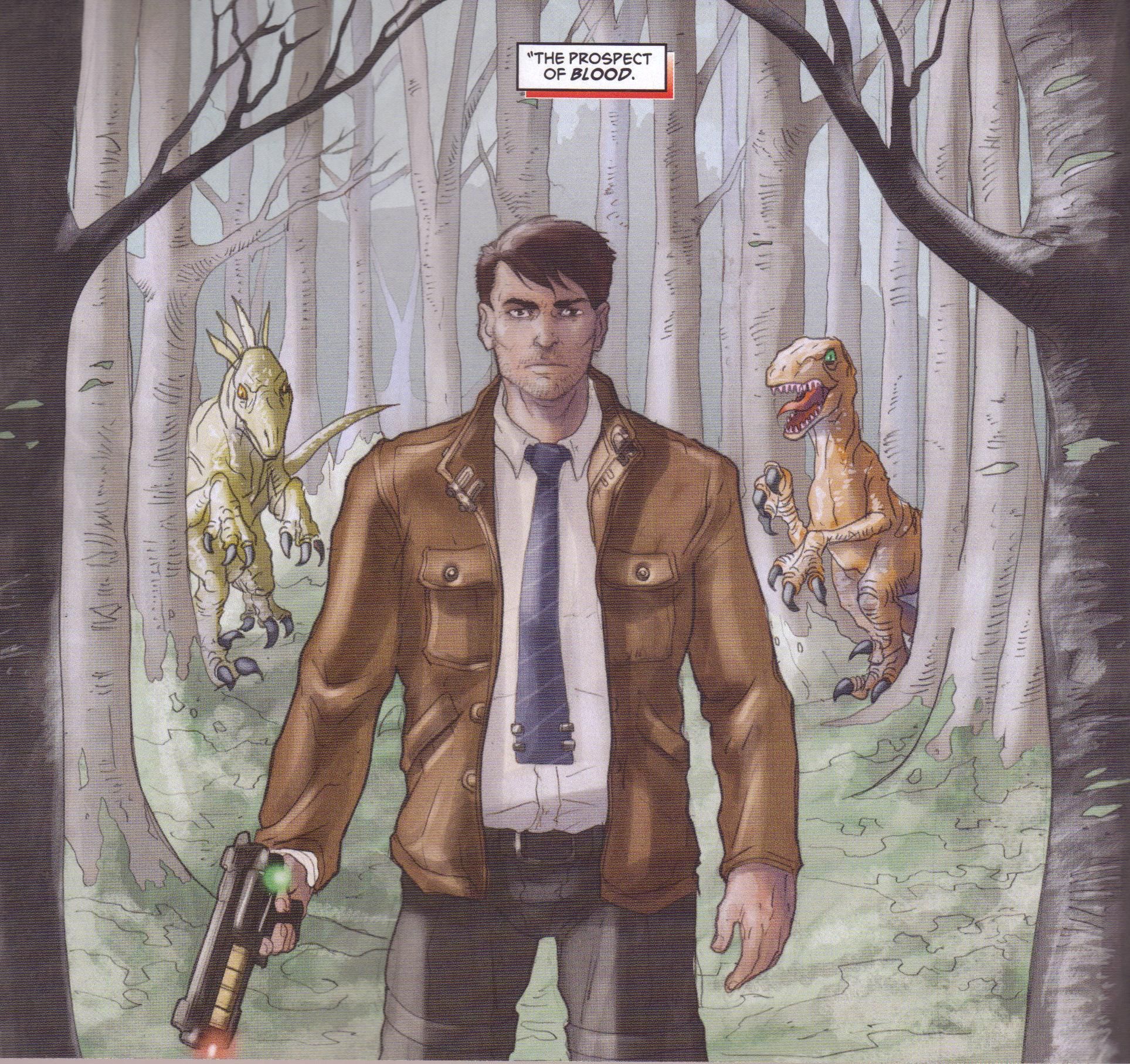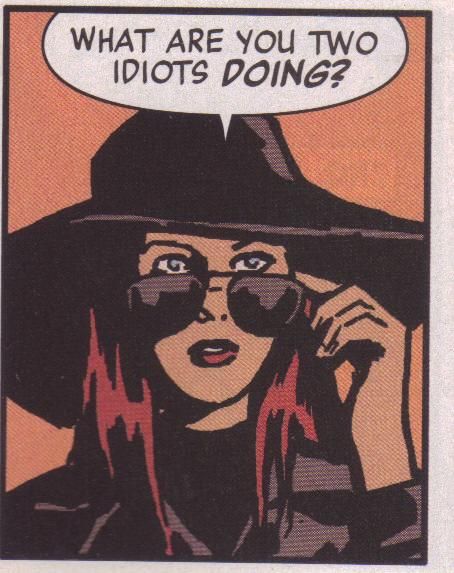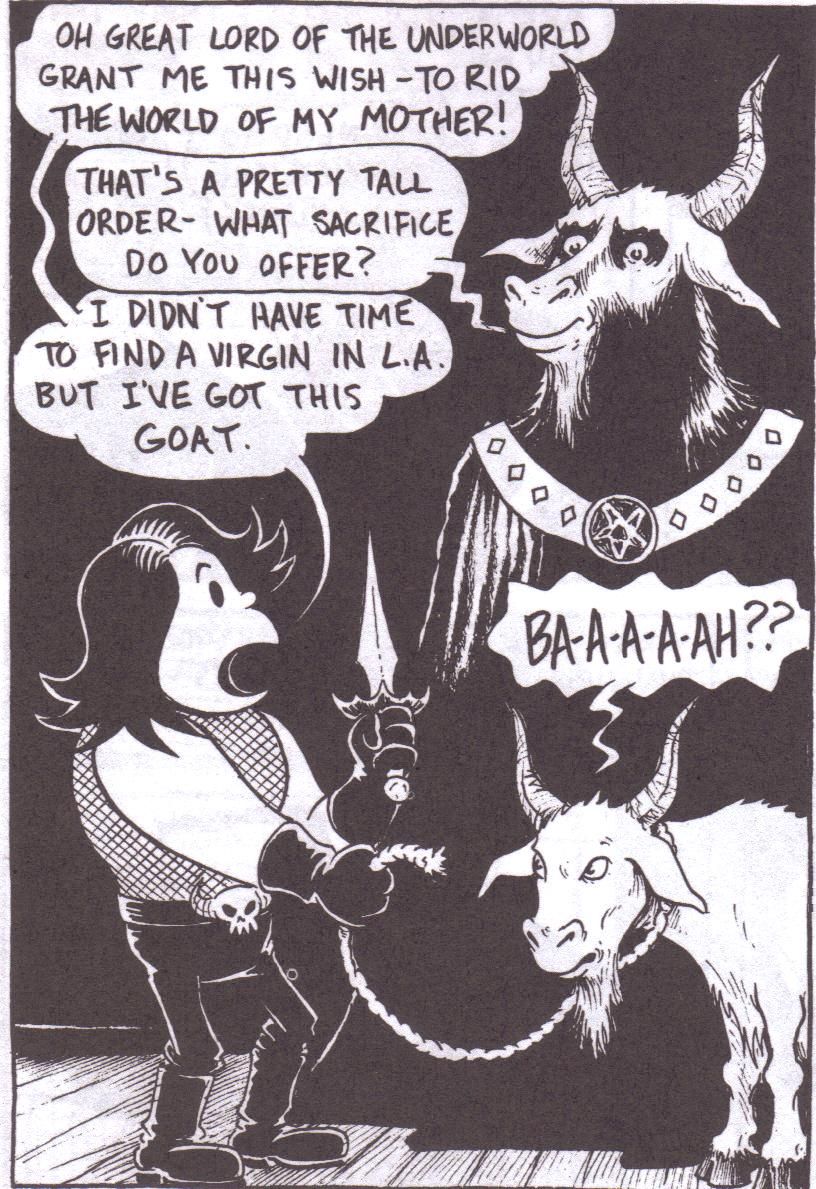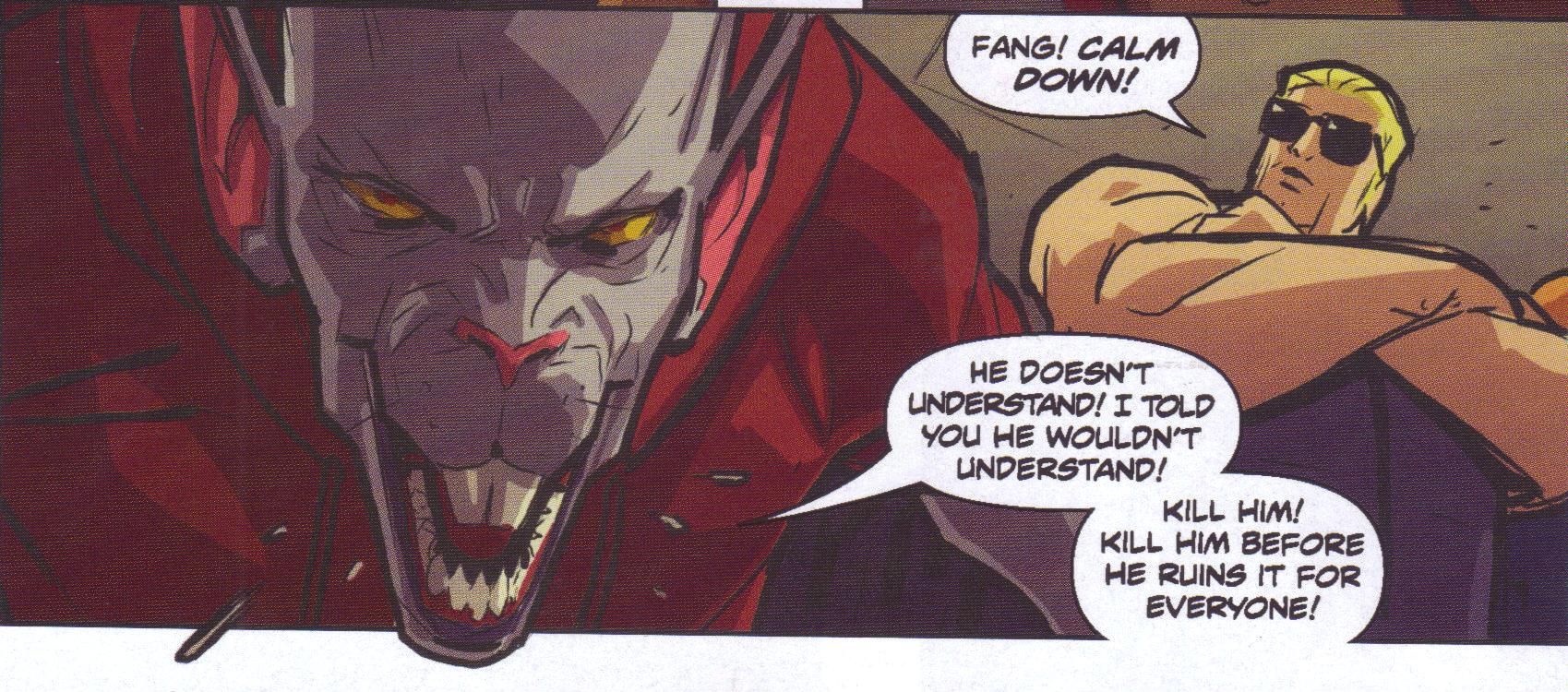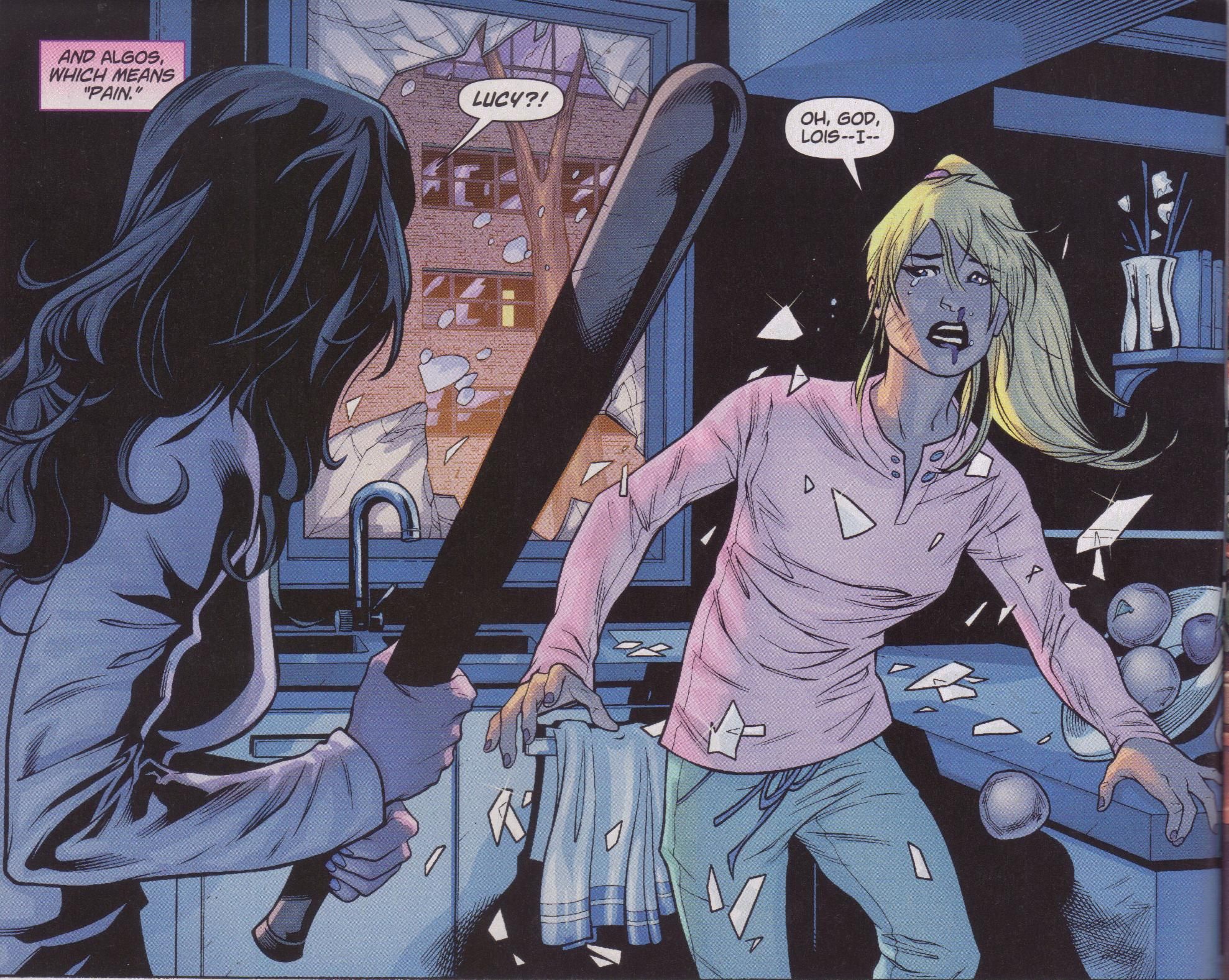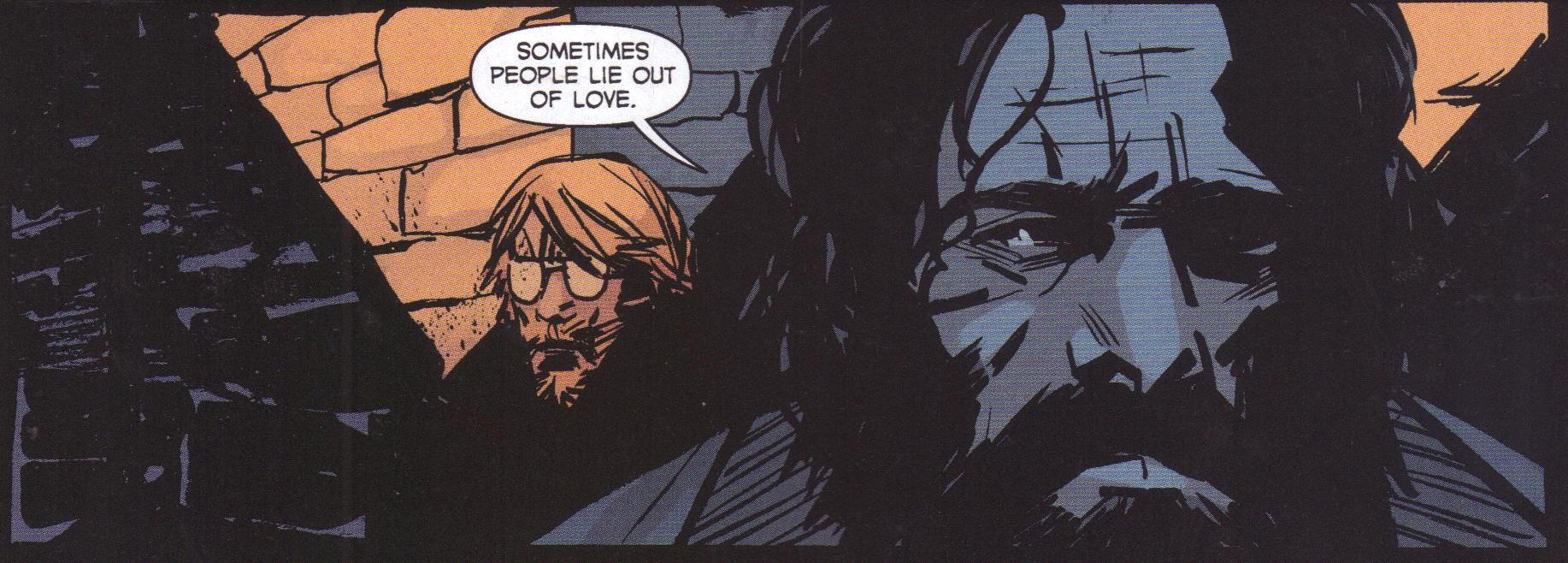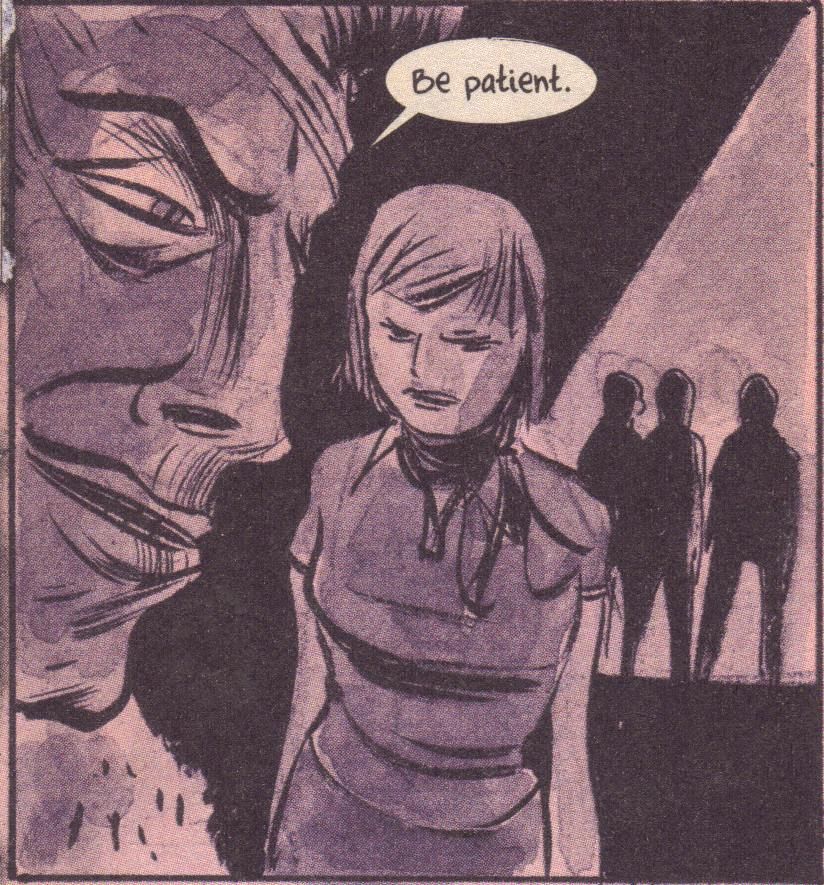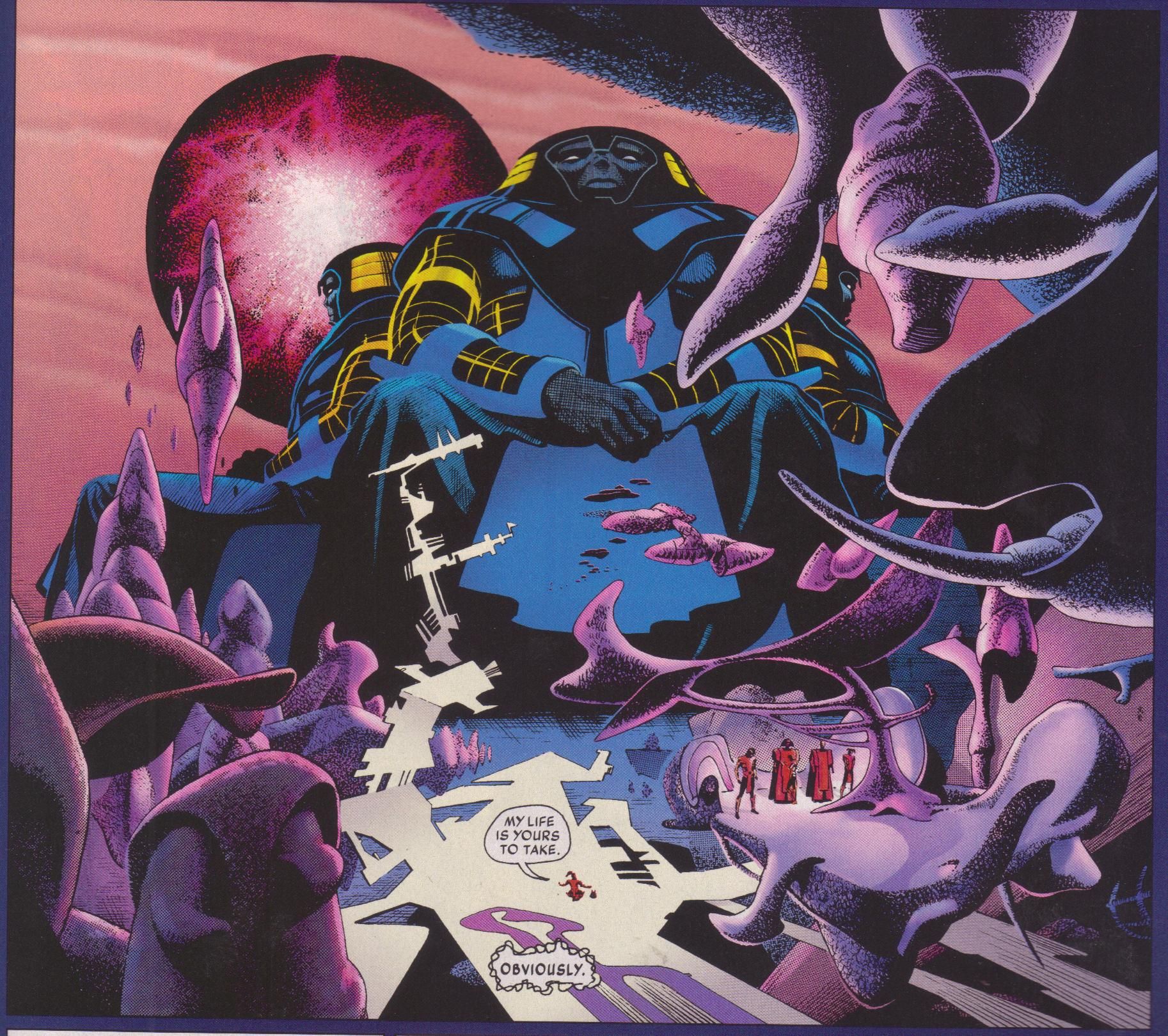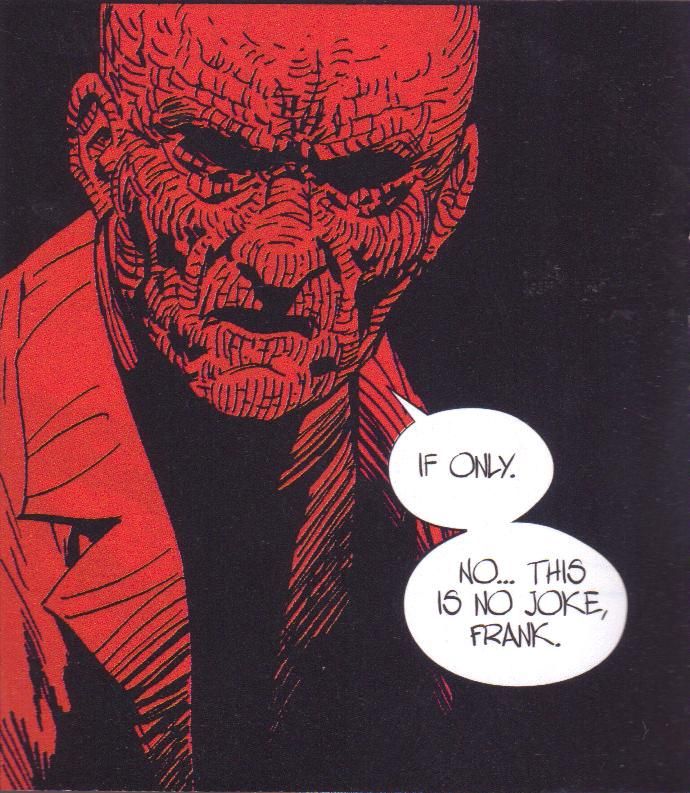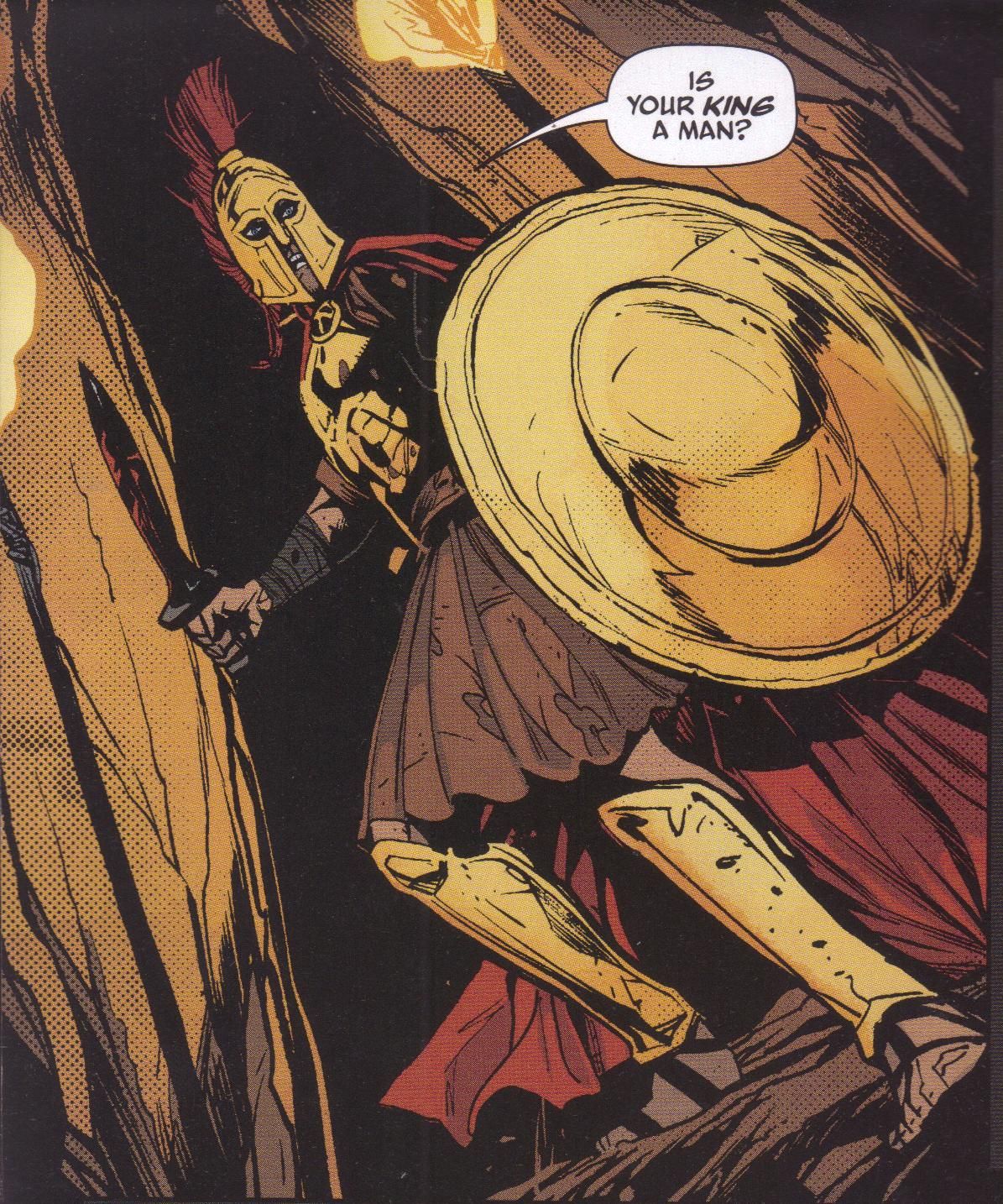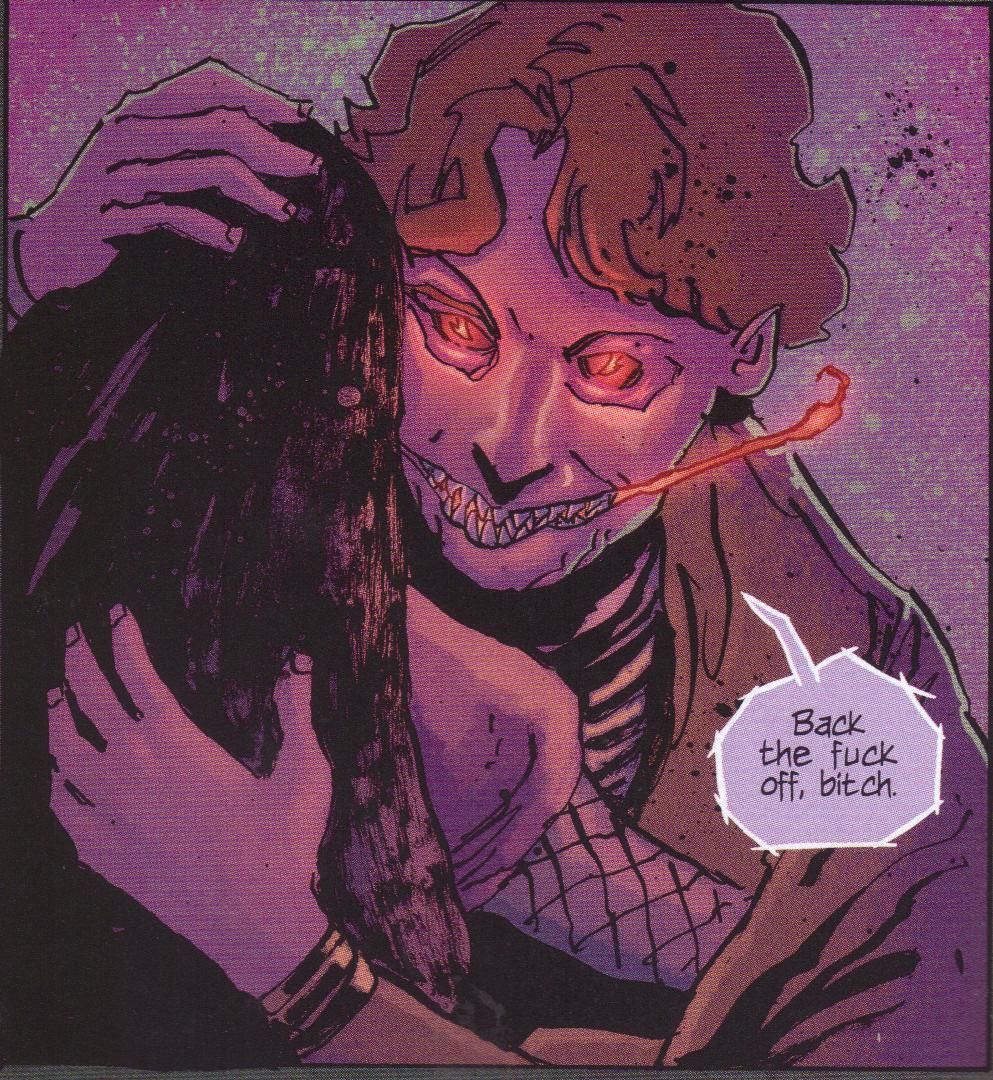"Those who are faithful know only the trivial side of love: it is the faithless who know love's triangles." (Oscar Wilde, from The Picture of Dorian Gray)
Black Science #4 by Rick Remender (writer), Matteo Scalera (artist), Dean White (colorist), Rus Wooton (letterer), and Sebastian Girner (editor). $3.50, 23 pgs, FC, Image.
This is Comic #1 this week in which I did not get a letter published, and I'm sad. They named the letter column "From Pillar to Post," which is pretty good. The idiom, in case you don't know, means to be forced from one place to another in an unceremonious or fruitless manner, which fits the book very well. My suggestion was "I Didn't Think It Was A Whale's Dick, Honey," which might have been to vulgar or might have been not clever enough or might have been not germane to a book called BLACK Science rather than WEIRD Science. Such is life. It's a good letter column name, though.
I was a little disappointed in this issue, because Remender has still not clearly defined the characters yet, as the book finally manages to catch its breath at the very end of this issue, and therefore the characters remain stereotypes, so the behavior of Kadir, which is supposed to be a great traumatic event, doesn't really carry much weight, because it's been established that he's a dick. (How's that for a sentence???) So there's a lack of tension, even though the scene plays out nicely. I really hope that Remender does begin giving us more about the characters, because the way these past two issues have been structured (especially this one), the character getting the spotlight dies. This is a common enough trope in fiction that I'm sure it has a name on TV Tropes, but I don't know what it is. I don't mind it happening once, but I do hope Remember doesn't fall into that pattern. We shall see.
I have to go back and re-read these issues, because when the group finally gets somewhere safe, it seems like there's a plot point that I'm missing. The way issue #1 began, it seems like some of these conversations don't make sense. I don't want to give anything away, but it's very possible I didn't read things correctly. Anyway, it's weird. Especially with the way the book ends - if not for the beginning of the series, I'd say it's obvious who the person is. But maybe I'm forgetting an important detail.
This is a pretty cool comic, and Scalera and White continue to kick much ass on it. I'm still a bit wary about it, but that's just me being me. It's how I roll!
Rating: ★ ★ ★ ★ ★ ★ ★ ☆ ☆ ☆
One totally Airwolf panel:
The Bounce #10 by Gaetano Carlucci (inker), Joe Casey (writer), Valentina Cuomo (color assistant), Sonia Harris (story consultant/graphic designer), Fabiola Ienne (colorist), David Messina (penciler), Giovanna Niro (colorist), and Rus Wooton (letterer). $2.99, 20 pgs, FC, Image.
In an age of decompressed comics, Joe Casey tends to stand out as someone who doesn't go into them too much. As The Bounce unspools, though, it's becoming clearer and clearer that this is a 10-issue (at least) origin story - this comic ends with Jasper reaching a point where he might get some answers. But it still could be an 11-issue origin story, too. The book is weird because of this - Casey has never been one to pussyfoot around, and it seemed like he didn't here, as Jasper is already a superhero when we meet him, but this journey that he's on has taken a long time to reach a point where he encounters the actual bad guy. Obviously, I've been reading along, so I, for one, didn't feel like I was being strung along too much - a bit, but not too much! - and it didn't really hit me until Jasper ends up in a complex in Pennsylvania where The Darling happens to be, and the end of the issue promises more answers than we've gotten in the previous 10. It's a clever trick - this is Casey's Bendis comic, basically, and as with every Casey comic, it feels like he's not only writing a story, he's writing a commentary on other stories. The idea of a "Spider-Man for the 21st century" who smokes pot and is kind of dissolute never fit too well with this book, but you could argue that Casey was writing a commentary on the kind of superhero Peter Parker would be if he got his superpowers in today's world. With this issue, though, it feels like Casey decided to out-Bendis Bendis himself, and I honestly don't know how conscious he was of it. So we get some answers, but they always open up more questions. I think Casey is a better writer than Bendis, though, so he's been able to walk the tightrope a bit better with regard to stringing the reader along.
Does my (admittedly, probably lame) revelation make the book better? A little. The Bounce, unlike Sex (which also came out this week), has always seemed to have trouble finding its footing, mainly because Jasper is kind of a douchebag. I mean, I know he's kind of supposed to be a douchebag, but still. As the mystery of what's going on has deepened, he's become less of a douchebag almost through default, as he can't help but become interested in what's going on, so his douchebaggery has faded into the background a bit. It's kind of interesting. Perhaps this means that Casey has found a sweet spot where Jasper can still act like a dick occasionally (because I don't mind that he's not the nicest guy, but it was a bit harder to care what happened to him because of it) but also treats people a bit better because he wants to figure out what's happening. Who knows? It's a nice, subtle shift, though.
So this might be the best issue of the series so far. I just think it's ballsy for Casey to write a Bendis comic, and I'm curious to see how far he'll push it!
Rating: ★ ★ ★ ★ ★ ★ ½ ☆ ☆ ☆
One totally Airwolf panel:
Chew #40 ("Family Recipes Part 5 of 5") by Rob Guillory (artist/colorist), John Layman (writer/letterer), and Taylor Wells (color assistant). $2.99, 22 pgs, FC, Image.
As always, I bang the drum for Chew because it's a series that has been going for a while, and once that happens, people tend to start looking around for a new shiny thing. That's the way it is, and it's really the only thing that excuses Marvel's #1-o-rama that they have going on at the company, because people like low numbers, dang it! I would say it's because our terrible education system means that people reading today (well, at least they're reading, right?) can't actually count past 20, but that would be mean. I'm not cruel, people! I get the concept of looking for the next shiny thing, but that doesn't mean we should forget the older series. Chew remains probably the best comic in the American comics scene at any given moment, and I will continue to bang the drum for it!
Yet another arc comes to an end, and while the issues since #30 (which contained, so far, the most emotionally devastating event in the series) have been good, it's clear that Layman was leading to this one, not only to allow Tony to move forward with his life but also to answer a few questions about long-simmering events in the book. So while we don't actually get an answer about the strange lettering in the sky from a while back, at least we know a bit more about it. Tony, who's been experiencing some weird psychotropic trips in the past few issues, goes whole hog in this one, as Amelia and Olive have fed him the strange chicken-tasting fruit from earlier issues, which sends him to some very strange places. Layman, as is his wont, gives Tony and John a case to work on, but unlike so many others, they're both stoned out of their minds while they do their job, which leads to a very funny sequence where it appears they're going to get in trouble with their boss but don't, for a very good reason. Oh, and another subplot about John lurches forward, in a very funny fashion. Layman, incredibly, has managed to write a terrifically funny 10-issue arc that also helps Tony deal with tragedy. That's impressive.
Guillory has always been excellent on the book, so I don't want to say this is his best work, but he really goes all out. The fact that both Tony and John are stoned to the gills means that they aren't seeing the world in quite the "right" way (see below), and this allows Guillory to go nuts. Not only do they go to work seeing each other as anthropomorphic agents, they get attacked by a case file, enter a factory of doom, and fight sheep. The triumph of the issue, however, is that moment when John ... well, he does something sweet. Guillory absolutely nails the entire sequence, including Tony's look of horror. A later sequence, which puts the cap on the entire arc, is also amazing, because it's both sweet and hilarious. Of course, Guillory's coloring is excellent, too, as you can see below.
Chew continues to amaze, and as Layman slowly moves into the end game, I can't wait to see what he has up his sleeve. I know the next arc is Poyo-centric, which should be pretty darned cool. I just hope nobody forgets about this comic when they're busy slobbering over the next #1 issue that Marvel puts out!
Rating: ★ ★ ★ ★ ★ ★ ★ ★ ★ ½
One totally Airwolf panel:
Deadpool #24 ("Deadpool vs. S.H.I.E.L.D. Part 4") by Jordie Bellaire (colorist), Gerry Duggan (writer), Mike Hawthorne (artist), Brian Posehn (writer), Joe Sabino (letterer), and Jordan D. White (editor). $2.99, 20 pgs, FC, Marvel.
So, um, what's going on at the end of this comic? Did I miss something, or are Duggan and Posehn just messing with us before they answer some questions next issue? Is that person we think is the real person someone else? Who could it be? SO MANY QUESTIONS!!!!!
Anyway, after the kill-happy issue #23, we all calm down as Deadpool prepares to have Agent Preston yanked out of his head. He's also trying to make amends for the deaths of certain people (I don't want to give it away), which is nice. I guess the big takeaway from this issue is that the inside of Wade's head is really messed up, which isn't too surprising, and that you should never try to do highly technical shit when you haven't actually caught the bad guy from your latest adventure. Poor Karl, man! And it's nice to see Michael and Ghost Ben Franklin again. And Future Deadpool looks pretty keen.
It's a typically good issue of Deadpool. It's not as good as last issue, but that one was really, really good.
Rating: ★ ★ ★ ★ ★ ★ ½ ☆ ☆ ☆
One totally Airwolf panel:
Doc Savage #3 by Bilquis Evely (artist), Daniela Miwa (colorist), Chris Roberson (writer), and Rob Steen (letterer). $3.99, 22 pgs, FC, Dynamite.
I might be an old person with a poor brain, but I could have sworn that it had been a really long time since issue #2 of Doc Savage came out. As it turns out, this issue came out perfectly on schedule. I don't know why it was bothering me - I don't live my life by the scheduling of a Doc Savage comic - but for some reason, over the past week before I got the list of what comics were coming out, I thought more than once, "I wonder what happened to Doc Savage?" Don't you love these peeks into my mind?
Roberson is trying to give us a Doc who is so much more advanced than mere humans yet doesn't share his inventions with the world, so he comes up with a rather extreme solution in this issue. I like it, though - I kept wondering, not how Doc would defeat the bad guy, but how the bad guy would win, because the bad guy does win in this issue, essentially. Roberson can't go to the well too often - Doc has to be a hero - but after three issues, he's managed to walk a fine line between Doc being a hero and the villains thwarting his plans enough so that the world doesn't become a technological marvel.
I am a bit annoyed that the bad guy gets under Doc's skin so easily. In today's world, we're supposed to be all sensitive, and that's great, but it leads to things like the skinny douchebag sociopath from Girls getting cast as Darth Vader, and we can't have that! Anyway, I don't mind that Doc is a bit sensitive, but when the bad guy tells him that it's his fault (and I don't want to go into more specifics than that), Doc should have just told him to shut the fuck up, instead of conceding he had a point. He doesn't have a point, because Doc, I assume, knew what the reaction to his research would have been - a villain would have done exactly what this villain does in this issue! I'm a bit sick of good guys letting bad guys get under their skin, in any sort of fiction. They're motherfucking bad guys! It's like when the good guys don't think that Norman Osborn or Loki or Lex Luthor is evil. Get a fucking grip, good guys!
I'm also curious if that's Nixon in the Kennedy White House. It looks like Nixon, but Nixon was not part of the Kennedy White House. After his loss to Kennedy, he went back to California to prepare for a run for governor. It still looks like Nixon, though. Or maybe all slimy politicians looks alike!
And dang, I'm liking Evely's art more every issue. She's really good, and I expect bigger publishers to start waving money at her soon enough. We shall see!
Rating: ★ ★ ★ ★ ★ ★ ☆ ☆ ☆ ☆
One totally Airwolf panel:
Elephantmen #54 ("Picking Up the Pieces Part 4 of 5: The Physical Impossibility of Death in the Mind of Someone Living") by Axel Medellin (artist) and Richard Starkings (writer). $3.99, 32 pgs, FC, Image.
Elephantmen is in the same category as Chew - it's been going for a long time, and its quality has never really gone down, yet not a lot of people seem to write about it. Even though I love it, I find it difficult to write about every single issue, because Starkings has built such an edifice of interconnected stories that it's hard to get into the specifics of one issue without going over so much of the series. So while this arc has been about something specific, in this issue, Starkings ties it into the greater story with the ending quasi-bombshell. He doesn't explain everything - like how Hip can see Scarlet - but he continues to do a nice job both moving the big story along and making sure that the mini-story works well. But that makes it hard to write too much about it. It's also hard to write about Medellin's art, because it's always good. I still love how he manages to use digital coloring to really good effect, like in the flashback bits, because while it's "real," it's also filtered through perceptions, so it's slightly askew, too. The way Medellin draws Scarlet's face throughout is excellent, too, as she seems quite bemused with everything that's going on (considering that she's a ghost, that's not surprising). So yeah - Elephantmen is still good. You know.
There's a short story on the flipside starring a science-fiction 1970s heroine called Liberty Justice, written by Tyler Shainline and drawn by Andy Suriano. It's not bad - Liberty is on a mission to kill some dude, and she jets across the galaxy looking for him. Suriano's frenetic art is neat, and the writing just zips us along. I wonder how long it will run?
Rating: ★ ★ ★ ★ ★ ★ ★ ½ ☆ ☆
One totally Airwolf panel:
Hawkeye #15 ("Fun and Games") by David Aja (artist), Chris Eliopoulos (letterer), Matt Fraction (writer), Matt Hollingsworth (colorist), Devin Lewis (assistant editor), Stephen Wacker (editor), and Sana Amanat (editor). $2.99, 20 pgs, FC, Marvel.
And then there's Hawkeye, which has already shipped issue #16 but, because #15 wasn't ready and either Fraction or Aja or both have compromising photos of Joey Q, is allowed to ship late and out of order. It's great that they get such special treatment, but I wonder why? I don't know how the book sells, but is critical love enough? I suppose it is.
Anyway, it's Hawkeye, so it's never going to be a bad comic, exactly, but there are still going to be issues. One is the fact that Fraction wants to write this weird, somewhat shapeless plot, but plot does matter, especially when Fraction himself makes it important. Look, I like it when Clint sits around and everyone tells him what a schmuck he is - those are some of the better parts of the book. But Fraction is ostensibly writing a comic with an actual plot, and sweet fancy Moses, he's taking his goddamned time with it. I mean, this is starting to resemble a DCnU book in the sprawling length of the plot! The problem with the giant plot is that it's not really that interesting - in this issue, we find out that the bad guys just want to gentrify (sort of) the area where Clint's building is located, which, Spike Lee's epic rant notwithstanding, isn't really the stuff of great comics. I mean, as a backdrop, it's not bad, but as Fraction moves it to the front, it becomes increasingly dumb, especially as Fraction muddies the legal waters a bit. If Clint doesn't actually own the building, why do the bad guys need to kill him? Can't they just sue him? I know - that wouldn't fit with the 1970s gritty ethos that Fraction is going for, but it's still smarter than sending a clown-faced assassin to kill him. Duh. There's a cliffhanger, too, but because of the way this book comes out, it means we have to wait until issue #19 before we find out what happened, and who the hell knows if that will even come out this year? There's an increasing chaos to the way this series comes out, and if Fraction wants to write a big mega-plot with cliffhangers that won't mean anything anyway (I mean, come on), then he and Aja have to figure out a way to get it together faster. The strengths in the individual issues (and there are strengths!) don't overcome the languid pace and the insipid plot.
Because Clint and now Barney are refreshingly idiotic (see below), as they puzzle out this big plot against them. They're both good guys, but Fraction writes them as meatheads, which is fun, especially as the women around them are so much more competent and realistic (which isn't always a good thing, as is pointed out in this issue). Despite the dumb plot, Fraction does a good job getting through the machinations, even going back to the earliest issues - if this were coming out on a regular basis without the Kate issues in between, it might work a bit better (well, the plot would still be lame), because Fraction does know how to circle around something before getting to it in an entertaining fashion, even though he doesn't always do it in an entertaining fashion. Plus, Aja is tremendous, of course. His layouts always help make Fraction's somewhat verbose scripts flow across the page, and his characters help sell the humor quite well - the fact that Clint's hair is never combed is weirdly endearing. He uses blacks very well, and when they're combined with Hollingsworth's colors, we get a really good gritty scene. Clint is fighting over a seedy place, but Aja and Hollingsworth do a good job making it a homey seedy place, as opposed to the skeevy office where the bad guys plot against our heroes. As Fraction loses the plot a bit more, Aja's artwork stands out as the biggest reason to buy the comic - it's that good.
Yes, my up-and-down relationship with yet another critically-adored comic continues! I just can't let certain things go!
Rating: ★ ★ ★ ★ ★ ★ ☆ ☆ ☆ ☆
One totally Airwolf panel:
Henry and Glenn Forever and Ever #4 (of 4) by Tom Neely, Noah van Sciver, Keenan Marshall Keller, Johnny Ryan, and Kristina Collantes. $5.00, 32 pgs, BW, I Will Destroy You Comics.
The latest mini-series comes to an end, as Glenn figures out a way to get his mother out of his life (she's dead, so it's not like she should still be in his life), and Neely has a lot of fun with zombie invasions and Satanism. Oh, and the Harlem Globetrotters, who show up for some reason. It's a little uncomfortable seeing Ted Nugent appear, considering that he's either gone insane or just has a better outlet for his insanity these days, but he's not in it all that much. As always, Neely cleverly writes a nice love story between Henry and Glenn even as they're chopping up zombies and summoning Satan. Noah van Sciver's story is just a simple tale about giant lizards trying to eat our heroes and our heroes fighting back, while Keller's story is about Henry and Glenn in space. Neither story is great, but they're still fun.
Neely's conceit continues to have legs, though, and his characterizations of Glenn, Henry, Daryl, and John are so much fun that I hope he has more stories planned for our heroes. This is such a goofy comic, but it works. That's always nice.
Rating: ★ ★ ★ ★ ★ ★ ★ ☆ ☆ ☆
One totally Airwolf panel:
Jack Hammer #2 ("Political Science Part 2: A Two Party System") by Brandon Barrows (writer) and Ionic (artist). $2.99, 24 pgs, FC, Action Lab.
I've mentioned before that I like my comics shoppe quite a lot, and my retailer is generally a good dude. I have some problems with getting issues very occasionally, but I'm not exactly sure why. I didn't get issue #1 of Jack Hammer, for instance, even though I ordered it. Did he forget to order it, or did Diamond just screw him? It didn't bother me too much, even though I ordered issue #2 before issue #1 came out, because even if I got this issue, I figured I could just wait for the trade. Or I could find the Action Lab booth at a convention coming up and buy the issues there. I won't be going to Emerald City this year, unfortunately (even if my wife was working, which she still isn't, unfortunately, the con falls on a weekend where I'm actually busy), but I will be in San Diego, so if Action Lab has a booth there, I can get this. That doesn't change the fact that my retailer didn't get issue #1 of this comic, and down below, you'll see another comic he didn't get, which actually vexes me a bit more. I don't know if this happens with a lot of people or just with me, because I order such weird stuff. I do know that last week he didn't get his shipment of New Warriors #1 on Tuesday, so it wasn't out on Wednesday. That's just weird. I don't know if this happens a lot in comics shoppes across the country, but it's annoying. I could get if he missed it - if you're using order forms to order books and also thinking about what your customers usually get, things fall through the cracks, and that's fine. If it's a Diamond thing, it just shows what happens when you have a monopoly. Good job, Congress!
Anyway, Jack Hammer #2 is okay. I'm not quite sure what the deal is - the main character is a noir detective who appears to have superpowers in a world full of superpowered people, and he's investigating a strange murder. It's the second issue, so there's a lot of chatting about what happened in the first issue, and the mystery about the dead guy deepens, as he wasn't quite what he appeared. There's a shady businessman, and given the title of the story, I imagine the brief bit about the politician will be important, and there's a missing woman. Of course there is!
It's not a bad comic, especially if you dig noir detective stuff, which I do. Unfortunately, Barrows doesn't do too much that's terribly unique, unless you count the fact that a lot of people have superpowers. Jack goes about his business, and I imagine there will be a big conspiracy involving government and big business, and someone will get double-crossed and Jack will have to fight someone. The art is also fine, but nothing special. The cleanliness of the lines and the coloring makes this far less gritty than it should be. As usual with digital-first stuff (which I think this was), the darker scenes are too dark when they're printed, so the stuff at the end is difficult to see. It's frustrating, but I can't do anything about it. The art tells the story perfectly fine, but it doesn't raise the story too much.
I haven't pre-ordered the rest of the issues, because I wasn't sure if my retailer was even going to get this one, so I'll wait, as I noted, until I see this at a convention. I always like to see a good detective story, and I hope this is one, but this issue doesn't fill me with a lot of confidence. It's only one issue, though, and I live in hope!
Rating: ★ ★ ★ ★ ★ ☆ ☆ ☆ ☆ ☆
One totally Airwolf panel:
Lois Lane ("Nostalgia") by Marguerite Bennett (writer), Marc Deering (inker), Ig Guara (penciller), Meghan Hetrick (artist), Hi-Fi (colorist), John J. Hill (colorist), Ruy Jose (inker), Emanuela Lupacchino (penciller), Diogenes Neves (penciller), Guillermo Ortega (inker), and Rickey Purdin (editor). $4.99, 38 pgs, FC, DC.
Let's talk about writing for a moment, shall we? I know it's presumptuous of me to write about writing when I myself am not a world-famous writer, having had one (1) story published in a tiny little magazine back in 1995 and nothing before or since, but I've been writing for 35 years, both fiction and non-fiction, and I've been reading for even longer, and I like to think I've learned some things. The idea of writing struck me as I was reading this one-shot about Lois Lane, but it could easily apply to so many other comics. Yes, I'm getting on my high horse. Join me, won't you?
So this story is about Lois, her sister, a new drug on the streets that turns users into monsters, and Lois's relationship with her sister. It's not bad, to be sure, and most of it is beautifully illustrated (I admit that I bought it because Emanuela Lupacchino draws some of it, and I get suckered into buying a few comics that I wouldn't normally buy because Emanuela Lupacchino is drawing them), even though it's in that distinctly "DCnU House Style" that defines almost every DC comic that comes out these days. I don't know who draws what - I recognize Lupacchino's art, and I think Neves draws the flashbacks to Lois's childhood, Guara draws the pages from when Lois first arrives on the ship to when she reaches the top deck, and then Hetrick takes it home, but I could be wrong. Anyway, the artists are all pretty good (except for Lupacchino, who's a notch above that) and the colorists give everything that shiny veneer that helps create that DCnU House Style. But I'm not here to write about the art!
Bennett wants to write a story about addiction and recovery, but because this is a superhero story, she has to make the drug turn people into monsters. That's fine. What I wonder about writers of comics and other media is how much they think about what they're writing. I don't mean the plot - plots are generally the least interesting part of any work of fiction (see Hawkeye, above), unless the writer is a genius. Bennett came up with a sturdy but unexceptional plot, and that's groovy. But then she started writing the words. On the first page, she writes Lucy and Lois talking to each other, and she immediately makes things a bit wonky by claiming that Lois and Lucy are speaking in their own language that they invented. There's nothing wrong with this, but she writes the words in English and a caption box tells us that they're speaking in another language. That's annoying. On another page, she actually writes out the language - it is, I suppose, a mix of German (which I recognize) and Japanese (which I don't), because they lived in Japan and then their father was transferred to Germany. The language is very clever, and honestly, there's no reason for the first page to be in English. The first words Lois says in the issue include the words "You'll fall," which is a theme of the comic, and Lois says it in English. Lucy answers her in their language, but she doesn't have to. The rest of the dialogue is filler, and it would have been much more interesting if Bennett simply wrote it as a foreign language and let us realize that they're speaking an artificial pidgin language, which we would have figured out anyway a few pages later, when both Lois and Sam Lane tell us. So right away, we're taken out of the story a bit.
I guess Lois has been in a coma, because she narrates about it in the first page set in the "present." She hears someone breaking in and goes to investigate, finding Lucy about to collapse (see below). She actually narrates that she doesn't know how to spell "nostalgia." Later, Jimmy Olson tells her that she spelled "emergency" wrong. Is that a thing for Lois in the DCnU? That's fine and all, although I would expect a journalist to try to learn how to spell things, especially relatively easy words like "nostalgia" and "emergency." (I just asked my 8-year-old daughter to spell "emergency," and she did it perfectly even though she hasn't learned it in school yet.) But whatever. The fact that Lois thinks "I can't spell the damn word, but I know its roots" is a bit forced, and I wonder why Bennett would force the etymology of "nostalgia" on us. Yes, it ties into the story, but wouldn't it be smarter to simply call the story "Nostalgia" and not make it so blindingly obvious?
Then there's the flashback segments. Elenor, Lois's mother, is sick in some way, a way that eventually kills her. Sam Lane is worried about her, and tells her she should be resting. Elenor - Ella - says, "Just because I'm not working at the laboratory anymore doesn't mean I'm made of spun sugar, Sam." I will go out on a limb and guarantee that no one has ever used that idiom to describe themselves in real life ever. EVER. It sounds so fake, and therefore silly. A page later, she comforts him about their kids. The first part of her statement is fine, but then she says, "And whatever hell or high water rises first ... Lois will never run." Again, it's a terrible way to put that, but let's consider her statement. Lois is prepubescent, so let's say she's between 8 and 11 years old. I'm going to lean toward the older end of that, but maybe not. As I noted, my daughter is 8. I would never say she will never run from things, because I have no idea. She's a good kid and she's learning karate and we tell her that she might have to stand up to people who insult her sister, but can you really know how she will react to things in the future? No. So Ella's statement is just one of those bullshit statements that we find in fiction because the character is brave and we're supposed to believe that they were always like that. Kids are weird, and there's no way Ella would have said something like this. It's just bullshit.
Then something weird happens. In the present, Lois cares for Lucy, and it's obvious from the artwork that Lucy and Amanda, her roommate who was using the new drug and was then kidnapped, are lovers. Yet Lucy never mentions that to Lois. Is Lucy still in the closet? Why would she not be out to her sister, with whom she shared such a bond that they made up their own language? If she is out, why wouldn't Lois know that Amanda is obviously more than a "roommate"? This is such a weird little sequence that I can't figure it out.
Lucy gets Lois to skip going to the police, and Bennett uses another dumb statement their mother made, "Not every wound leaves a scar," to link the entire theme of family comes first, so of course she decides to help Lucy instead of alerting the cops (which I have no problem with, actually). We get a very weird scene in the park with Jimmy, who gets her a tiny camera she can use to film everything she finds out, and then she ... does something. I have no idea what's going on. She wants Jimmy to run into her fist, he says no, so she instead he simply leans in and does as she asks, which is to place his head on her fist and "grind." I have absolutely no idea what's going on in that scene. Did I miss something? If what he's doing is illegal and we're supposed to believe that she punched him to get the camera, Bennett does a horrible job explaining that. It's very weird.
When Lois finally finds out where the kidnapped people are going, we get a two-page infodump that is handled really poorly. We certainly need an infodump, but this comes in the form of dialogue between two scientists who already know all the information. It's not even Lois figuring things out by finding some kind of file or audio recording, it's her overhearing these two scientists talking, and they happen to mention every relevant thing about the drug within earshot of the reporter (granted, she's tied up, but she's still in a closet with an open, barred window at the top, so, you know, duh). After that, it's just a question of escaping, finding out the big secret (which isn't that big a shock, but that's okay), and tying it all back to Ella Lane's death from some kind of mysterious illness (if this took place in the 1800s, it would be "consumption," I'm sure).
I've spent far too much time obsessing over the writing because it's frustrating reading stuff like this, and I don't know if I'm the only one who's frustrated. Look, writing good dialogue is difficult. If you try to write "realistic" dialogue, you get Bendis and his "um, uh" stuff and everyone repeating the same line. Bendis (and others) can make that work, but it really does have diminishing returns. Writers shouldn't necessarily strive for "realistic" dialogue, but they should strive for "good" dialogue, and that's hard to do. A lot of writers struggle with it. Many writers get around it by writing almost exclusively expository dialogue, which doesn't do much for characterization but at least moves the plot along. If you're doing that over the course of a longer series, it will often expose character eventually. Bennett doesn't have that luxury, and she doesn't only want to write expository dialogue - she wants to write things that help reveal this love the sisters have for each other and the way they try to honor their mother, but her dialogue is extremely hackneyed and therefore ends up being almost comical. When you're writing purely character-building dialogue, you have to be very careful about it, because it's too easy to slide into mawkishness. One reason television can get away with this is because actors on TV can inflect the words with their own interpretation, and the back-and-forth between actors can raise the level of the dialogue. Too many comics writers, it seems, write dialogue believing it's going to be spoken. There's a big difference between spoken dialogue and dialogue that readers read, and the two should not be confused for each other. Too often, they are.
The frustrating thing about this and so many other comics is that they feel like first drafts. There's some interesting stuff in here, but nobody - not Bennett and not editor Rickey Purdin - seemed to take a red pencil to certain things. In the factory grind of monthly comics, I wonder if there's not enough time to go over this stuff with a more critical eye, but this is a one-shot, so that shouldn't be an issue. So Bennett writes the script, and then the artists draw it. Does Bennett see it again so that she can, maybe, add or subtract some dialogue? I don't know. Does Purdin look at the entire product and say, "Some of this dialogue is unnecessary because the art is sufficient"? I don't know. Comics are such a collaborative effort that the art can tell the story as well or better than the writing, yet there's a lot of extraneous verbiage in so many comics that I wonder if the writer sees the art working with the writing before it gets sent to press. Or maybe writers aren't good editors, but shouldn't editors be good editors?
Ultimately, Lois Lane is just another mediocre superhero book in a market full of mediocre superhero books. It's such a good example of the mediocrity of superhero books, though, which is why it struck me so much and made me want to ramble on about it. Things like this bug me, because it doesn't take a lot to turn mediocre into good or even great. The fact that it doesn't get done makes me sad.
Rating: ★ ★ ★ ★ ★ ☆ ☆ ☆ ☆ ☆
One totally Airwolf panel:
The Manhattan Projects #18 ("Assassination") by Jordie Bellaire (colorist), Jonathan Hickman (writer), Nick Pitarra (artist), and Rus Wooton (letterer). $3.50, 21 pgs, FC, Image.
Hickman decides to go a little nuts in this issue, as General Westmoreland blasts his way through the labs trying to kill the big blue alien that has been killing everyone, and then Oppenheimer lures Einstein into his plot, which doesn't end particularly well. This is a fun issue, but it doesn't advance the plot too much - Hickman has done that quite a bit, but he has to clear some dead wood every once in a while. So Pitarra gets to have fun, turning Westmoreland into some kind of savage Schwarzeneggar, complete with ear necklace, wreaking havoc across the base as he hunts his prey. He doesn't care who gets in the way, which is perversely awesome. Hickman writes the big blue alien as a stoner dude, which is quite cool, and Pitarra makes sure he's monstrous, so the clash is well done. Bellaire's bright splash of blue for the alien helps him stand out well in the sterile lab, and later, there's a spot of blue when Westmoreland meets Grove, and it's also a very nice touch. I love the weird science of the book, but it's also fun when Hickman simply ramps up the ultra-violence and Pitarra gets to draw it in all its bloody glory. The book continues to be a great read, and I still have no clue where Hickman is going with it.
Rating: ★ ★ ★ ★ ★ ★ ★ ½ ☆ ☆
One totally Airwolf panel:
The Massive #20 ("Bloc Part 2 of 3: Siege") by Jordie Bellaire (colorist), Garry Brown (artist), Jared K. Fletcher (letterer), Brian Wood (writer), Spencer Cushing (assistant editor), Jim Gibbons (associate editor), and Sierra Hahn (editor). $3.50, 22 pgs, FC, Dark Horse.
Speaking of dialogue, check out the Airwolf panel below. In the wrong hands, that line could be painful to read, but Wood is a good writer, so while it's very doubtful that anyone would be that profound in real life, it's a good line in fiction, especially because it comes at the end of a long conversation between that dude, Yusup, and Cal Israel. Wood gets in some exposition about Mary, who is more than she appears, so the dialogue helps move the plot along ever so slightly, but because Wood doesn't immediately jump into sentimentality, when he finally gets to a tragic line like the one below, it hits harder. This is not a mainstream superhero comic, obviously, and Wood's dialogue on something like Ultimate X-Men is less crisp than on this book, but he still knows what he's doing. He doesn't always hit the mark, but he does more often than not. This is what dialogue should do - people aren't as straight-forward as we'd like them to be, they don't always say exactly what they're thinking, and they don't always understand what the other person is talking about. Yusup and Cal's conversation brings up some very important points, but it also reveals things about Cal and Mary, so it serves a dual purpose.
I've always been on the fence about The Massive, but I know it's not going to last very much longer, and it has gotten better, so I guess I'm in for the whole thing. Issues like this, or even moments like the one between Yusup and Cal, make it easier to stick with it.
Rating: ★ ★ ★ ★ ★ ★ ★ ☆ ☆ ☆
One totally Airwolf panel:
Mind Mgmt #19 ("The Magician Chapter 1") by Matt Kindt (writer/artist), Ian Tucker (assistant editor), and Brendan Wright (editor). $3.99, 24 pgs, FC, Dark Horse.
Kindt begins a new arc, which follows on the previous ones - Meru and her crew are still trying to recruit ex-agents to fight against the Eraser, who is also still recruiting agents. This time Meru is trying to recruit the Magician, but her power-cancelling power screws things up before they can talk to the Magician, which leads to some interesting complications. There are fissures within Meru's group, and Meru's screw-up pushes the Magician to the Eraser and her group, which is of course what Meru didn't want. It's a solid first issue of the arc, because it sets up a bunch of different directions for the book to go in - Kindt manages to tell four different strands of the same story and make it all coherent, while still managing to cram some tragedy into it, as the Magician is not who she claims to be, and that leaves bad feelings in her wake.
Kindt structures the book cleverly so he can tell so many stories. He shows the panels as if they've been ripped from different sources and taped together in a six-panel grid (two across, three down), so that the fact that they're telling different stories is more obvious. On the left side of the page, he tells the Magician's story, while on the right side, he uses one panel each to tell the other three stories. It adds a bit of tension to the pages, but it also speeds things up a bit, so that all the threads feel more frenetic, even though the stuff that's happening isn't as "exciting" as in some other issues. It's a clever trick that we've seen before in comics, and Kindt uses it very well.
I guess Kindt has planned this for 35-40 issues - it's noted in the letters column that we're now into the "second half" of the book, so we'll see how long he actually goes. It's another of these comics that is great partly because I have no idea where Kindt is going with it, but I'm fiercely curious about it. Why must we wait for the next issue, damn it!!!!
Rating: ★ ★ ★ ★ ★ ★ ★ ½ ☆ ☆
One totally Airwolf panel:
Miracleman #3 by Joe Caramagna (letterer), Alan Davis (artist), Michael Kelleher (art restorer), Garry Leach (inker/art restorer), Beardo the Beardy (writer), Steve Oliff (colorist), and Cory Sedlmeier (editor). $4.99, 32 pgs, FC, Marvel.
I keep buying this for a few reasons: I have no idea if Marvel is actually going to release a hardcover of the entire epic, considering that they're starting with a hardcover of the first four issues for a whopping 30 dollars, so who knows how much the entire thing will be priced at (I underestimated Marvel's crass greed, I see - I thought they'd just wait until the entire thing was reprinted and throw out a hardcover for anywhere from $50-$75, which is looking increasingly unlikely). Plus, I'm not sure how much of the extra stuff will be reprinted, and the extra stuff is stuff I've never read. So while the main story in this issue is excellent - Moore sets up the giant battle between Miracleman and Kid Miracleman later in the series with a shorter, almost-as-brutal fight in this issue, introduces Evelyn Cream and his turquoise teeth, and starts to show that Mike Moran is not handling being a superhero all that well - I really wanted to read the Warpsmiths story that has been even more lost to the mists of time than the main story. It's a pretty cool story, too, and while it's not super-essential to the main story, it does bring in the conflict between the Warpsmiths and the Qys which is fairly important later in the Miracleman epic. Leach's art is lovely, too. I can guess that Marvel will reprint it in the big hardcover, but I didn't want to take the chance!
I know this is a comic I've read over and over and know very well, and that the temptation is to say "It's Alan Moore" and just leave it at that, but whenever I re-read it, I'm really struck by how good it is. I'm really glad it's available to a wider audience, because Moore is really good in this story, the art has not taken the awful turn it will later (trust me on this), and the art restoration and coloring is very good. So yeah, I'm a sucker, but I'm a self-aware sucker!
Rating: ★ ★ ★ ★ ★ ★ ★ ★ ☆ ☆
One totally Airwolf panel:
Sex #11 ("Something in the Night") by Joe Casey (writer), Piotr Kowalski (artist), Brad Simpson (colorist), and Rus Wooton (letterer). $2.99, 18 pgs, FC, Image.
Unlike The Bounce, Casey seems to have a better idea about this comic, or else he's just writing it better, because even an issue like this, in which very little happens and which simply sets up a bunch of stuff, is interesting and well-written. Simon and Keenan have it out after the events of last issue, and it's clear that there are some issues between them. Annabelle confronts her employee who was hanging out with the Prank Addict, and obviously that little subplot has not played out yet. The Prank Addict himself is still being held by the Old Man, and things are not going well for him. The reporter, Juliette, is given license to check out Simon. Simon meets with the mayor at a party, and Elliot finds out some icky things about the businessman he's meeting with. And then Keenan infiltrates the gang we've been hearing about. So there's a lot of set-up and no pay-off, but because Casey has done a good job with all the characters, all the various threads feel important and even the short time we spend with each character is fairly gripping. Casey is juggling a lot in this series, so an issue like this is probably necessary every once in a while to keep us all up to date with everyone.
Kowalski and Simpson do a fine job on this issue, especially Simpson. Kowalski doesn't have a ton to do, but he does need to work with a lot of characters who are just reacting to each other, and he pulls it off nicely. Keenan's barely-contained rage, Annabelle's scorn, Juliette's cockiness, the Prank Addict's defeated look, Elliot's fear, and Sheila's sadness are all very clearly drawn, and Simpson does a wonderful job with the warm tones at the party of the elite and the blues when Sheila collapses in tears. Both artists have been on top of their games since the book began, and this is another example of it.
Sex just keeps moving along. It's a weird book, but it's a pretty good one. That's always nice!
Rating: ★ ★ ★ ★ ★ ★ ★ ☆ ☆ ☆
One totally Airwolf panel:
Three #5 (of 5) by Jordie Bellaire (colorist), Clayton Cowles (letterer), Kieron Gillen (writer), Ryan Kelly (artist), and Professor Stephen Hodkinson (historical consultant). $2.99, 28 pgs, FC, Image.
Three ends pretty much the way we expect it to, but that doesn't mean Gillen doesn't do a good job with it. Klaros tells his "secret origin," of course, which was necessary. He and Damar have sex, of course. But Gillen makes a compelling case that Klaros and Terpander could do what they do, even though what happens to them is inevitable. It's a tensely-written issue, and Kelly does a really good job with the brutal fighting that takes up most of it. He's always pretty excellent, and here he uses rougher lines to scratch up the bronze helmets of the Spartans and etch their faces a bit more harshly, showing how difficult the helots' lives are and how brutal warfare in ancient Greece was. Gillen also makes an interesting point about the difference between nobility and winning - is it noble to lose honorably, and is it ignoble to win dishonorably? When you're a king, can you care about that? Gillen implies, unfortunately, that it's better to lose with honor than win without it, but of course history isn't that simple. Gillen knows that history isn't that simple, yet he still implies it. Weird. Plus, he falls into the old cliché about sex. If you don't know what that is, I won't tell you because it will spoil too much, but it's a cliché, I'll tell you that much!
Still, this is an interesting comic. It's wonderful to look at, of course, and Bellaire colors it nicely, and Gillen is a smart enough writer that the few faults in the narrative don't change the basic coolness of slaves fighting an empire. It would be nice if the trade includes the conversation between Gillen and Professor Hodkinson that has appeared in the back of every issue, because it's very neat. Make it so, Image!
Rating: ★ ★ ★ ★ ★ ★ ★ ☆ ☆ ☆
One totally Airwolf panel:
Umbral #4 ("And Black Waters Remain") by Jordan Boyd (painter), Antony Johnston (writer), Thomas Mauer (letterer), and Christopher Mitten (artist). $2.99, 22 pgs, FC, Image.
I also sent a letter to Umbral and it didn't get published, and I'm also sad. They didn't ask for letter column names (at least I don't think they did), but I guess when Antony Johnston asks for letters, people send him letters, and I get left out in the cold. It's okay - I can take it. It's not like my copy of Umbral #4 is stained with tears or anything.
Umbral continues to be a cool-ass book, and that's thanks to everyone involved doing such super-duper work. Johnston continues to spin this weird tale, introduce new characters and new threats, and make Rascal a fascinating character. Mitten is still kicking much ass - his ghost pirate ship is amazing (oh, yeah, there are ghost pirates in this book), and for some odd reason I loved the one drawing of the Umbral whose smile goes beyond the limits of its face - it's very Sam Kieth, and it fits the book well. Boyd's colors, especially in the caves, are amazing, and the shift between the blacks and purples and reds of the caves to the warm tones of the council's meeting are striking. Mauer's letters for the Umbral are really nice, too - their jaggedness helps create a "voice" for the evil that would otherwise be missing. So, yeah, everyone's humming along nicely. That's always cool to see!
Now, if only their letters column recognized quality letters when they got them, we'd be in business! :(
Rating: ★ ★ ★ ★ ★ ★ ★ ½ ☆ ☆
One totally Airwolf panel:
Wasteland #51 ("Thy Kingdom Gone") by Justin Greenwood (artist), Antony Johnston (writer), Douglas E. Sherwood (letterer), and James Lucas Jones (editor). $3.99, 24 pgs, FC, Oni Press.
Wasteland #51 came out, I think, in mid-December. This is another example of my retailer either screwing up or Diamond screwing him. I've always gotten Wasteland, and I think he's occasionally gotten more than one copy (very often, the copy I order of the odder stuff is the only copy he gets, because he knows he won't sell any others), but this never appeared. Why he wouldn't order it when I've gotten every other issue is beyond me, so I wonder if Diamond screwed up. Again, it's frustrating. The problem with it is that for some reason, his re-orders are even more screwed up than his occasional bad regular orders, so if I re-order something, I might as well forget about ever getting it. It's very weird. I looked around Phoenix briefly for a copy, but finally relented and bought this from MidtownComics.com. I like their on-line store - I love their physical store in Manhattan - and so if I need something and I have to get it on-line, I usually go there first. So this came in the mail this week, over two months late, and I figured I'd write a bit about it.
This is the final issue of the Newbegin story, and it's pretty cool, as the weird naked figure that's been terrorizing the city finally gets to the point, and his point is pretty brutal. Johnston reveals plenty, and it's a satisfying ending. Greenwood does a good job, especially in the scenes where we find out what Marcus has been hiding.
I don't want to write too much about a comic that came out so long ago, but I did want to mention it. Wasteland heads into its home stretch - I imagine #52 ought to be out soon - and I'm looking forward to it. Plus, since it's at the end of the alphabet, I'll get to re-read it sooner rather than later! Yay for alphabetical OCD!
Rating: ★ ★ ★ ★ ★ ★ ★ ★ ☆ ☆
One totally Airwolf panel:
Archer and Armstrong volume 4: Sect Civil War by David Baron (colorist), Simon Bowland (letterer), ChrisCross (artist), Khari Evans (artist), Allen Passalaqua (colorist), Fred van Lente (writer), and Josh Johns (editor). $14.99, 102 pgs, FC, Valiant.
More fun stuff, I'm sure, even though our heroes look awfully serious on the cover!
Cape Horn by Diego D'Aquila (colorist), Quinn and Katia Donoghue (translators), Sébastien Lamirand (colorist), Hélène Lenoble (colorist), Christian Perrissin (writer), Enea Riboldi (artist), Studio Kmzero (colorist), and Alex Donoghue (editor). $39.95, 226 pgs, FC, Humanoids.
Man, this is a beautiful book. I'm really looking forward to reading it.
The First Kingdom volume 3: Vengeance by Jack Katz (writer/artist). $24.99, 208 pgs, BW, Titan Comics.
For some reason, I didn't pre-order volume 2. I meant to, and I pre-ordered volume 3, but not volume 2. Of course my retailer didn't order one just for the shoppe, so I'll have to get volume 2 on-line somewhere before I dig into this one. I suck.
Snowpiercer volume 2: The Explorers by Gabriela Houston (letterer), Benjamin LeGrand (writer), Jean-Marc Rochette (artist), and Virginie Selavy (translator). $24.99, 140 pgs, BW, Titan Comics.
I guess this story is only two volumes? I didn't read volume 1 because I figured I could wait until volume 2 came out and read them together, which is now my plan. It looks pretty keen, though. And I guess the Weinsteins aren't going to mess with the movie too much, which is nice.
Uncanny volume 1: A Season of Hungry Ghosts by Simon Bowland (letterer), Aaron Campbell (artist), Bill Crabtree (colorist), Andy Diggle (writer), and Joseph Rybrandt (editor). $19.99, 132 pgs, FC, Dynamite.
Yes, it's a spy comic. Written by Andy Diggle. Drawn by Aaron Campbell. So, right up my alley.
Where Bold Stars Go to Die by Gerry Alanguilan (writer) and Arlanzandro C. Esmeña (artist). $7.95, 54 pgs, BW, SLG.
This is a slim volume, but it's utterly beautiful. Alanguilan's last comic, Elmer, was excellent, so I'm looking forward to this.
**********
So the governor of Arizona, Jan Brewer (seen here telling the president to eat his vegetables), vetoed Senate Bill 1062, which made Arizona once again the leader in stupid legislative ideas, after South Carolina briefly took it back by, in essence, censoring colleges who teach that gays and lesbians might actually be human beings. In case you've had your head in the ground for the past week, SB 1062 would protect people from lawsuits if they refused services to others, mainly due to the providers' strong religious beliefs. Critics interpreted this, rightly, as Christians denying services to gay people. The supporters of the bill claimed it had no language about discriminating against gays and lesbians, and that's true, but whenever they spoke of the bill, they could only bring up the case in New Mexico where a wedding photographer was sued because they refused to photograph a gay wedding. So it's clear that this bill was mainly about denying services to homosexuals. The problem with their bill is that it was a solution in search of a problem. New Mexico has anti-discrimination laws that include homosexuals, and Arizona does not. A wedding photographer who denies to take pictures of a same-sex wedding is not breaking any state laws in Arizona (several cities have passed anti-discrimination laws, but not the state). So they're already protected from lawsuits, so this bill would have done absolutely nothing except institutionalize discrimination. As many people pointed out, there would be nothing to stop a Muslim service provider from denying services to Christians or any other permutation, as long as they could claim "sincere" beliefs. This was really a slam-dunk veto for Brewer, even if she didn't come right out say it was morally repugnant. She's not running for re-election (she wants to, but so far, she hasn't changed the law to allow her to), and she's been much more concerned about economic issues since her disastrous signing of SB 1070 - the law that says the police can stop anyone and ask for their papers at any time, which many people interpreted as anti-Hispanic - put a dent in the state's economy. I'm sure Brewer regrets signing SB 1070, and she wasn't about to sign this one. So yay for the evil corporate wing of the Republican party, which briefly triumphed over the evil Christian wing?
Moving on to more cheery stuff, here's a link to a SpongeBob/Watchmen mash-up. It's brilliant, frankly. I don't like the ending, because I think Alan Moore would love it unequivocally. Plus, Alan Moore apparently never goes on the computer - he might still have a Commodore 64, but he probably didn't even keep that! So how would he even know this exists? Still, I would watch the hell out of a SpongeBob/Watchmen parody.
Last week was the tenth anniversary of Eurotrip, one of the funniest movies of the millennium so far. If you don't believe me, you've obviously never seen it, and you need to rectify that right now. The fact that one of the cast members is Tim, the cool-as-hell marshal on Justified (who really needs more to do - he and Rachel should get a spin-off), is even funnier. And damn, the German girl in it is super-hot.
I'm sure there's more going on, but I'm over 10,000 words, so I should probably stop. I'd list my ten most recent songs on my iPod, but I took my car in for servicing yesterday and they shut off the electrical system, which reset the shuffle. I'm getting frustrated! So I'll just skip it this week, and maybe it will be back next week.
Thanks for reading, and I hope everyone has a good weekend. We're crossing our fingers for rain here in the Basin - it's in the forecast, so let's hope!

